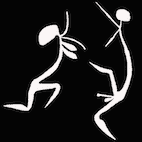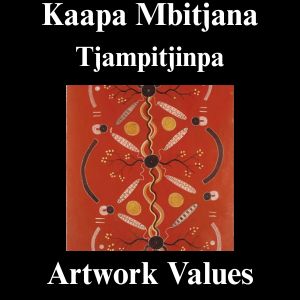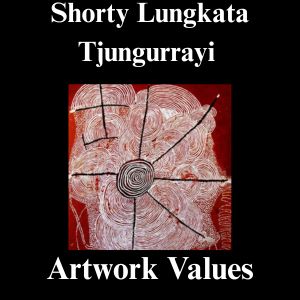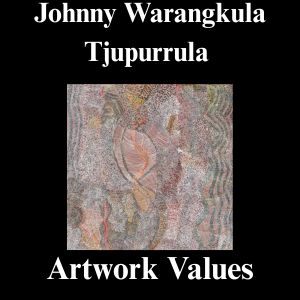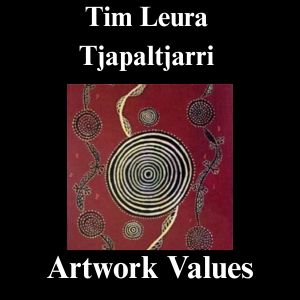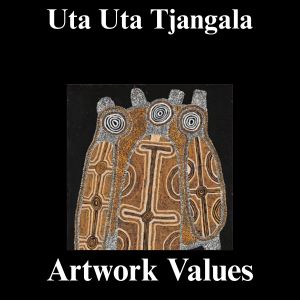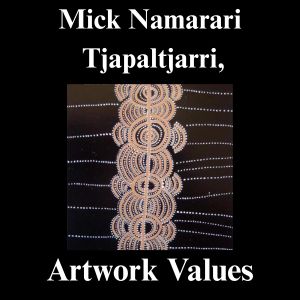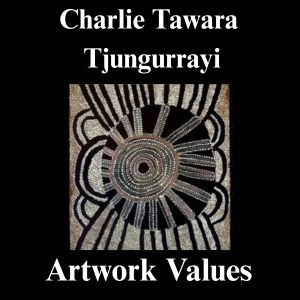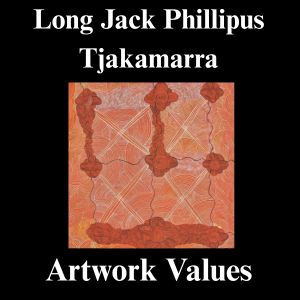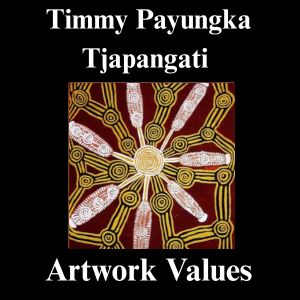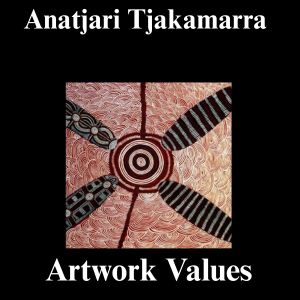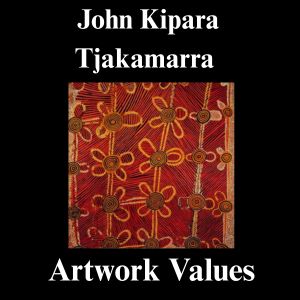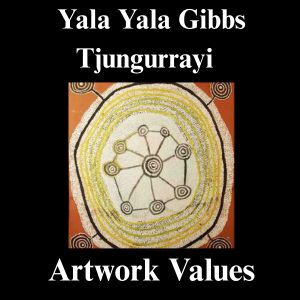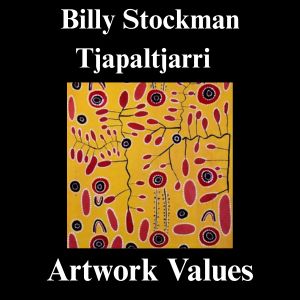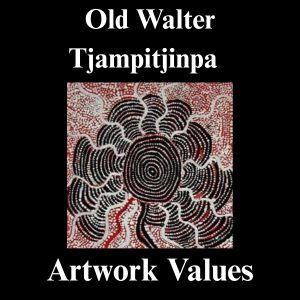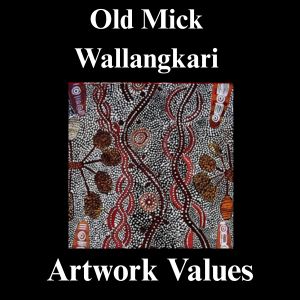Anatjari Tjakamarra Artworks and Values
Anatjari and the Rise of Papunya Aboriginal Artworks
Anatjari Tjakamarra’s artworks, particularly his masterpiece Story of a Woman’s Camp, gained significant recognition in 2010 when the National Museum of Australia acquired the painting at auction. This landmark acquisition set a new valuation benchmark for the artist.
Originally created in 1973, Story of a Woman’s Camp was painted specifically for The Rothmans Art of Aboriginal Australia exhibition — the first major international showcase of Western Desert Aboriginal art. Held in Canada, this pivotal exhibition marked the debut of Papunya paintings as fine art on the world stage, challenging perceptions and elevating Aboriginal visual storytelling to global acclaim.
Remarkable for its scale, the painting stands out among works of the era. Seven specially transported composition boards were delivered to Papunya to allow artists, including Tjakamarra, to create large-format works suitable for international exhibition.
Today, Anatjari Tjakamarra’s contributions remain a significant contribution in the history of Western Desert art, and his work continues to drive interest in Papunya Tula painting among collectors, institutions, and art historians worldwide.
Exploring the Early Papunya Art Movement: Anatjari Tjakamarra Artworks from 1971–1972
The years 1971 and early 1972 mark a pivotal moment in the birth of the Papunya Tula art movement, and Anatjari Tjakamarra was among its foundational figures. His early artworks from this period are distinguished by their monochromatic backgrounds and deeply spiritual content, often featuring sacred Aboriginal iconography and sacred objects such as churinga (tjurunga) and bullroarers—powerful ceremonial objects central to Indigenous Dreaming stories and rites.
One notable piece from this formative phase, Men’s Ceremony (1972), offers rare visual insight into traditional Aboriginal male initiation ceremonies, capturing the ceremonial use of ancestral symbols through an abstract yet highly codified visual language. These works were instrumental in the first phase of the Western Desert art movement, helping to bridge ancient cultural expression with contemporary art practice.
The color palette Anatjari employed—white (pipeclay), red and yellow ochre, and black charcoal—reflects the traditional pigments used in body painting and ground designs during ceremonies. These earth-based materials ground his work in cultural authenticity while also highlighting the raw, elemental aesthetic that defined early Papunya paintings.
During this time, Anatjari painted primarily on readily available composite and particle boards. These surfaces were often small or uneven. Despite their humble materials, these paintings represent a historic moment in contemporary Aboriginal art, laying the foundation for what would become a globally recognized art movement.
Anatjari tjakamarra Artworks 1971
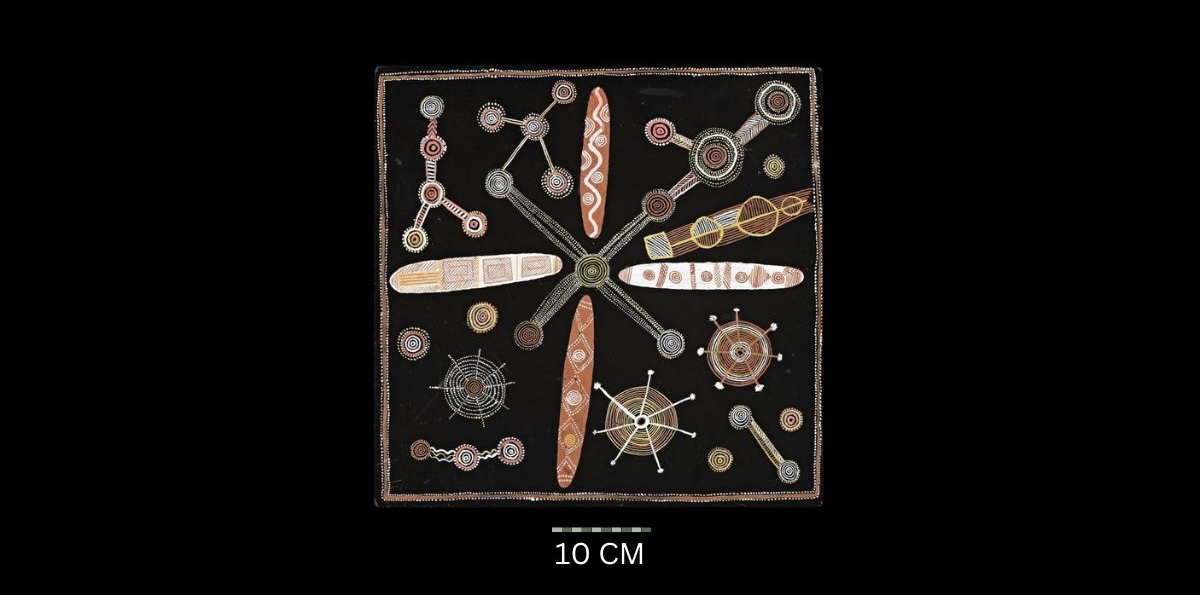
Men’s Ceremony, 1971
Synthetic polymer powder paint on composition board, annotated diagram attached verso,
45 x 46 cm
Hammer Price: A$50,000
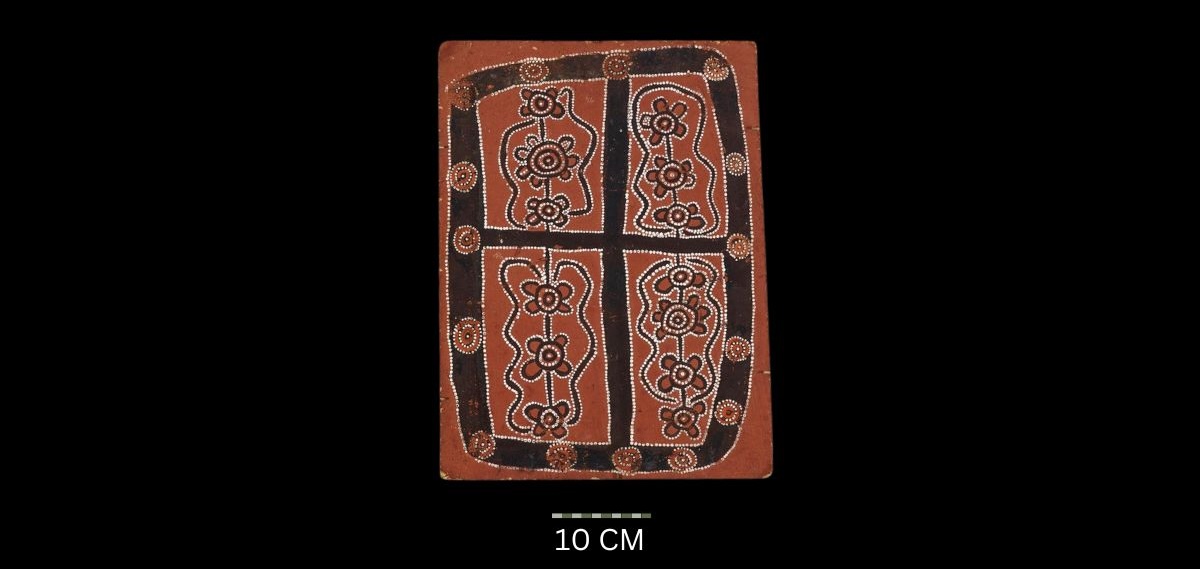
Pintupi Four Part Dreaming, 1971
Synthetic polymer paint on composition board,
45 x 33 cm
Hammer Price: A$23,000
Anatjari Tjakamarra Artwork 1972
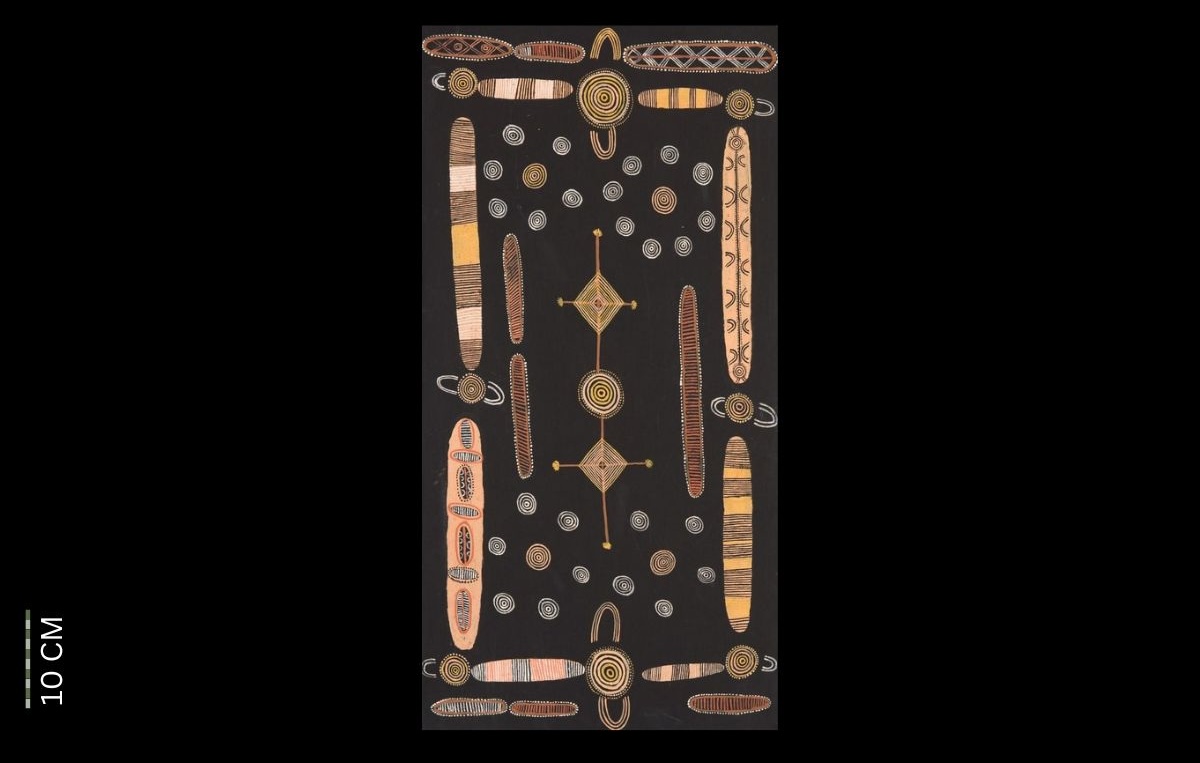
Big Pintupi Ceremonial Occasion (1972) AKA Mens dreaming site
Synthetic polymer powder paint on composition board,
70.4 x 35.3 cm
Hammer Price: A$75,000
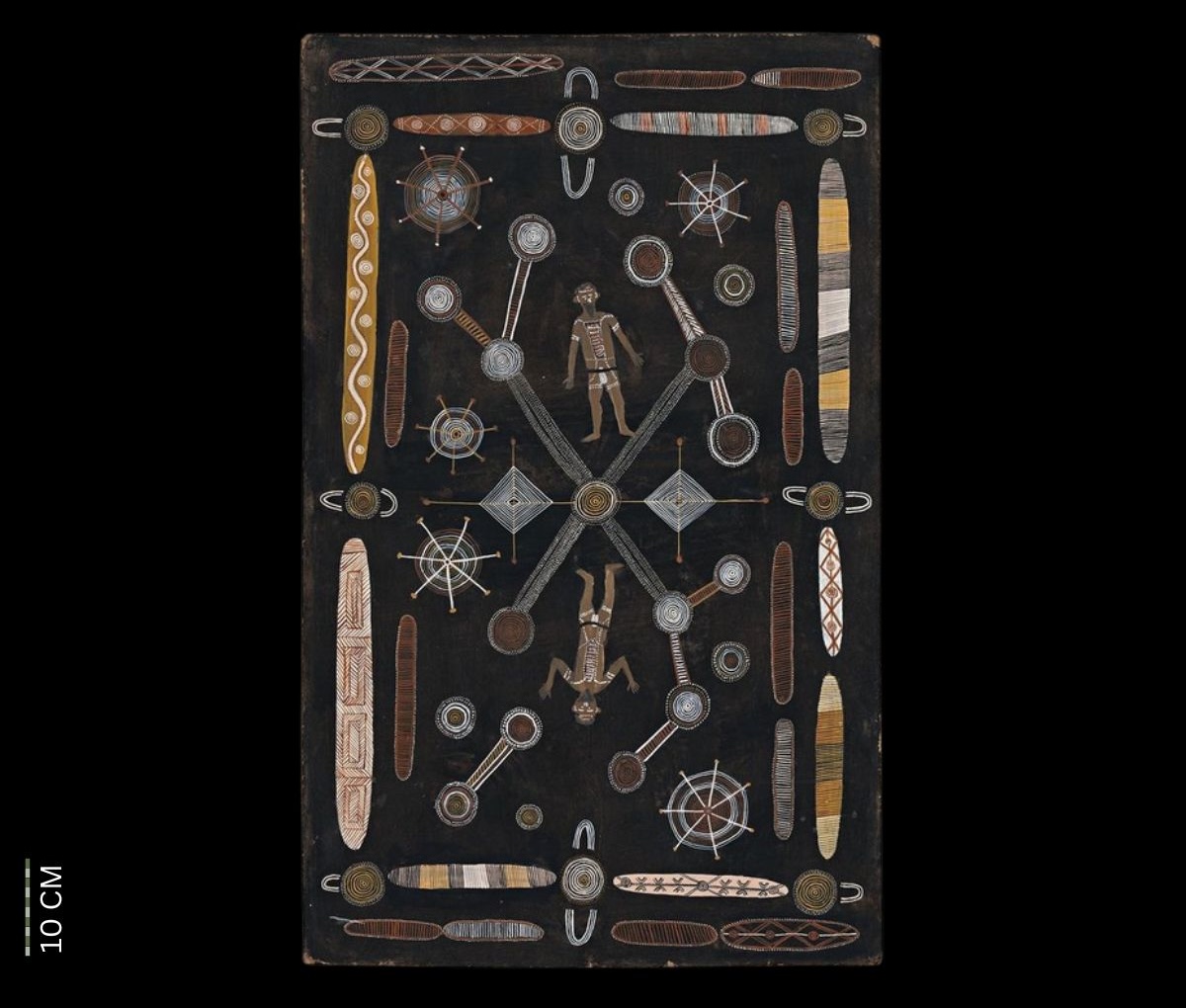
Men’s Ceremony, 1972
Synthetic polymer powder paint on composition board,
97 x 60.5 cm
UNSOLD
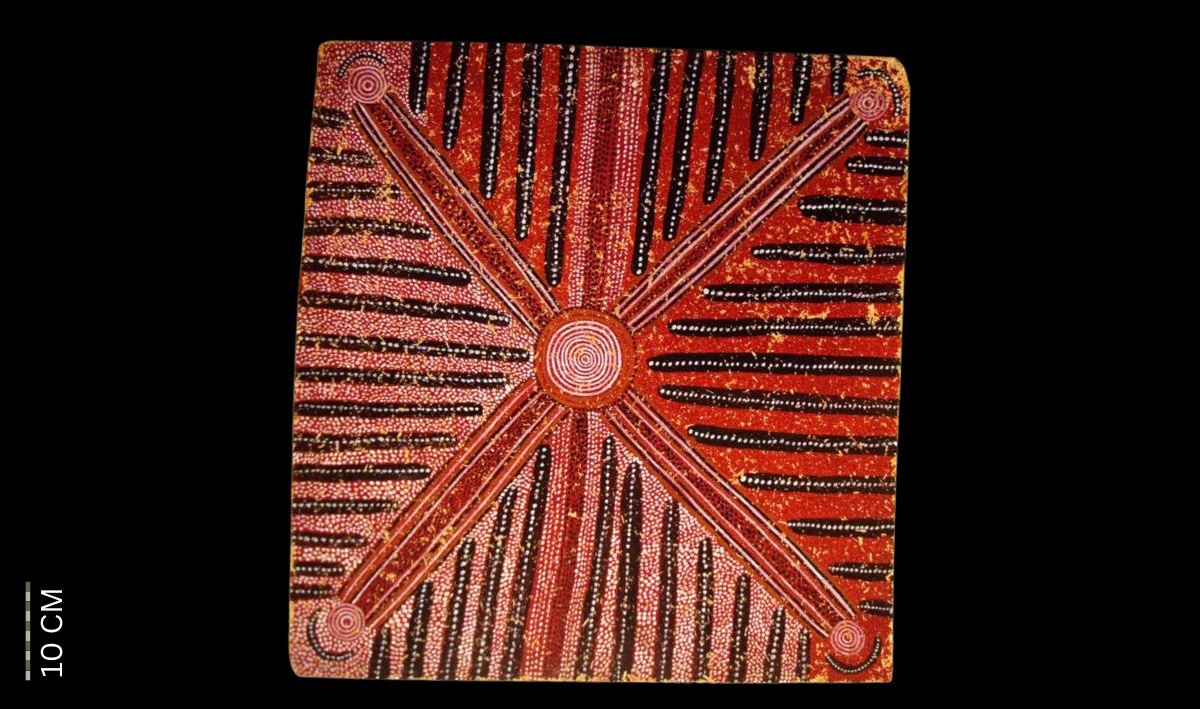
Tjilpi (Old Man’s) Corroboree 1972
Synthetic polymer powder paint on particle board, bears title (Old Man Corroboree) and the words ‘Four Bullroarers, Central cave’ in Peter Fannin’s hand on the reverse,
64 x 60 cm
Hammer Price: A$9000
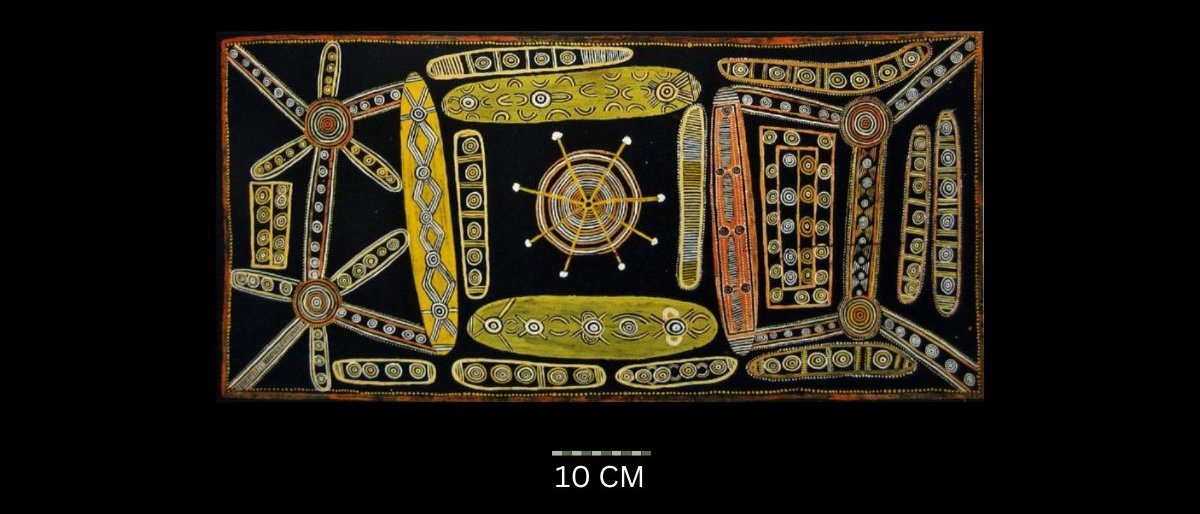
Women’s Dreaming 1972
Synthetic polymer powder paint on composition board, bears artist’s name, Anatar III (sic) and Stuart Art Centre consignment number 12049 and the number 60 on the reverse,
76 x 35.5 cm
UNSOLD
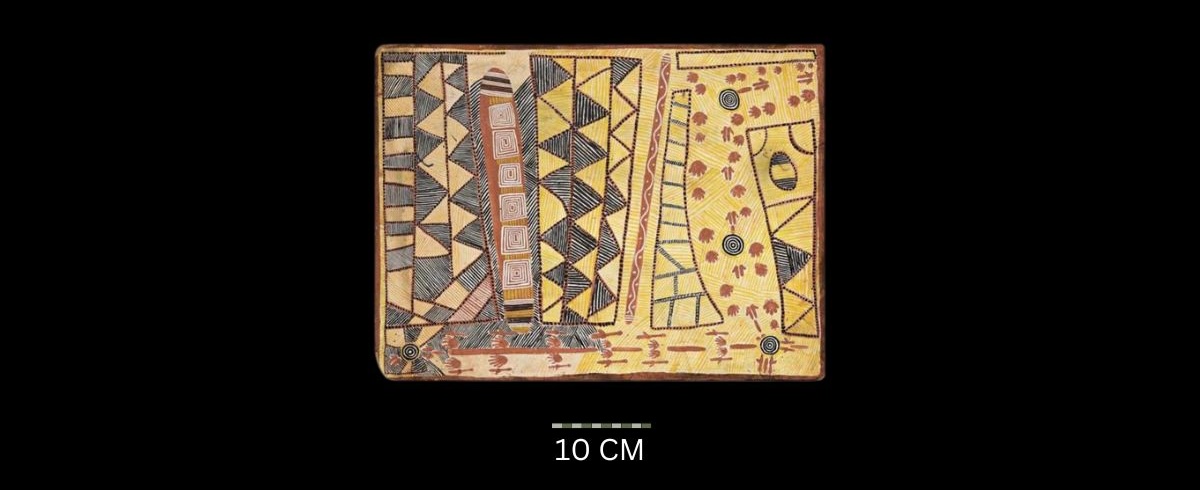
Untitled (Wallaby Story) 1972
Synthetic polymer paint on composition board, bears Stuart Art Centre consignment number 18040 on the reverse,
45.5 x 61 cm
Anatjari Tjakamarra: Evolution of Style in the Papunya Movement (1972–1974)
Between 1972 and 1974, Anatjari Tjakamarra made a significant stylistic shift in his artistic practice, marking the second phase of his contribution to the emerging Papunya Tula art movement. Departing from the monochrome backgrounds of his early works, Anatjari began to embrace densely dotted backgrounds and, in some cases—such as the masterful Pakarangura—intensely detailed linework that added rhythmic complexity.
This period saw his continued focus on ceremonial symbols and traditional Aboriginal motifs, though now enhanced with multi-colored dot infill.
One of the most innovative techniques Anatjari pioneered during this time was the use of optical color blending through dotting. By layering small white dots over a red base, he could evoke the illusion of pink, while black dots on red could simulate a deep maroon or dark red effect. This subtle manipulation of color and perception showcases his growing sophistication as an artist.
Although Anatjari still painted on composition board and occasionally salvaged construction materials, the surfaces were now more uniform, rectangular, and higher in quality, offering a more stable and larger canvass. These improvements allowed for greater experimentation in technique and visual illusion.
The artist’s colour palette expanded in this period to include browns, greens, and yellows, deepening the visual impact of his work.
Anatjari drew not only from central desert iconography but from iconography found on dance boards and churinga from his homelands further West. The sacred boards of these areas have concentric squares and were often depicted
This era was a blossoming of Anatjari’s creative development and contributed to the increasing complexity and refinement of Papunya painting techniques, which would influence generations of Aboriginal artists to come.
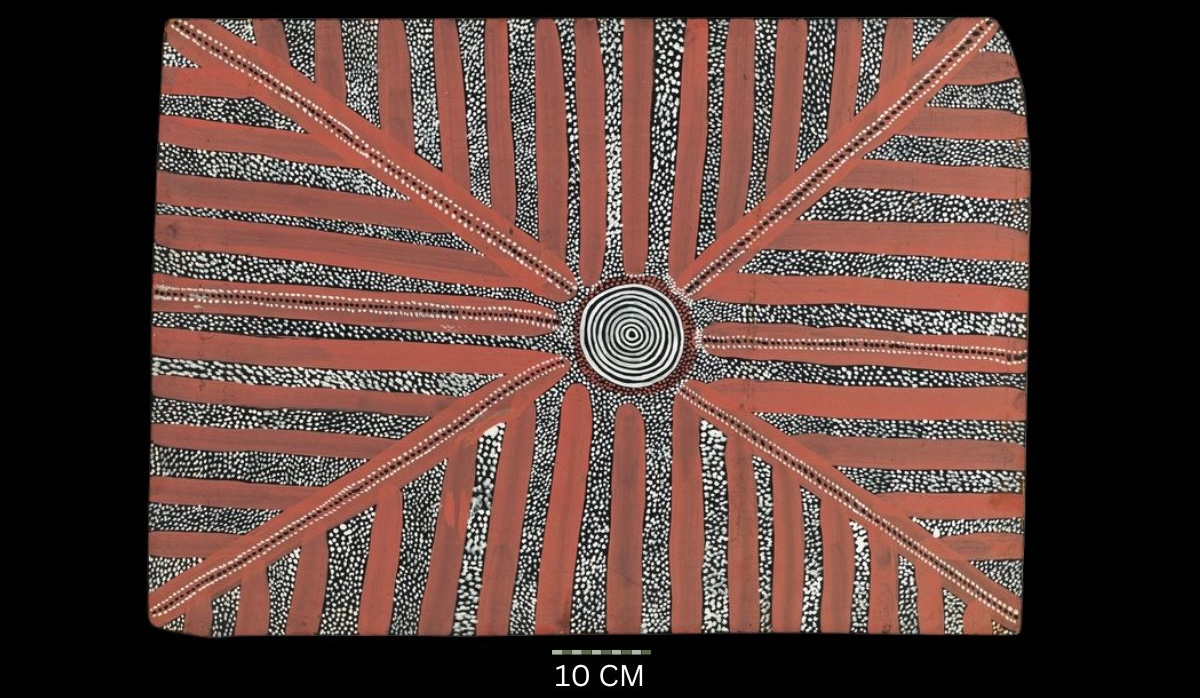
Untitled, Body Paint for Initiation
Synthetic polymer paint on composition board, bears Stuart Art Centre catalogue number 19408 on reverse,
65 x 47 cm
UNSOLD
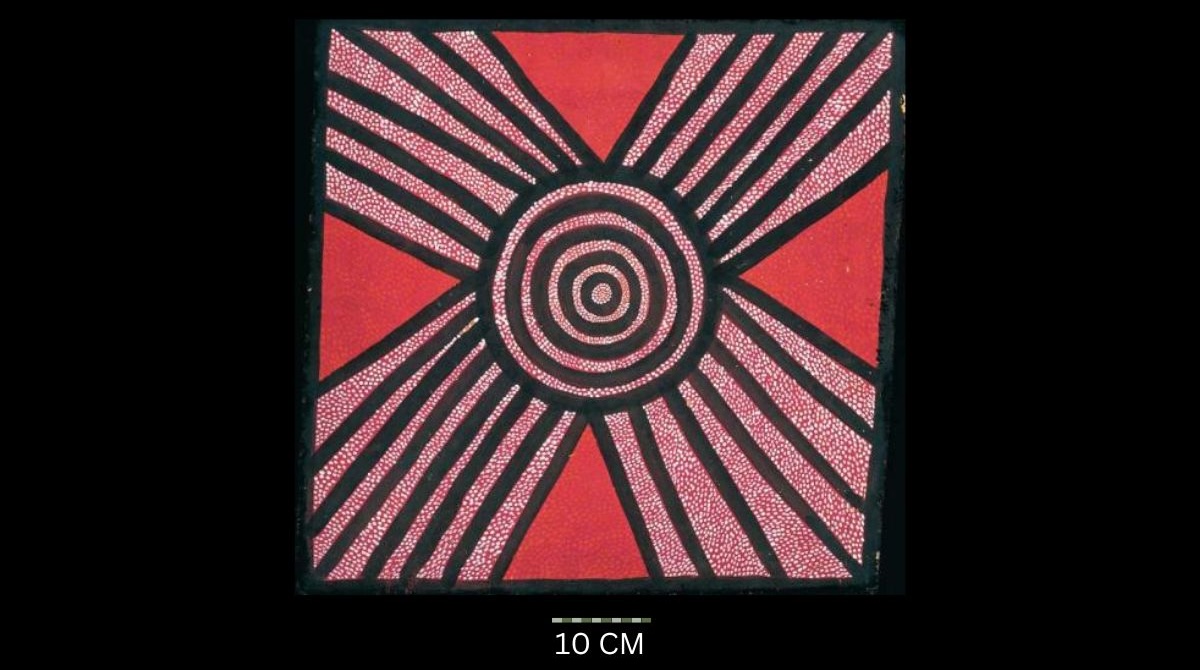
Untitled 1972
Synthetic polymer powder paint on composition board, bears Stuart Art Centre catalogue number 20049 on the reverse,
57 x 59 cm
UNSOLD

Corrobboree for Doctor Men Jambajimba and Jabaljari 1972
Synthetic polymer paint on composition board, bears artist’s name ‘Anatjara no. 3’ (sic.) and Stuart Art Centre consigment number 15014 on the reverse,
40.5 x 15.5 cm
UNSOLD
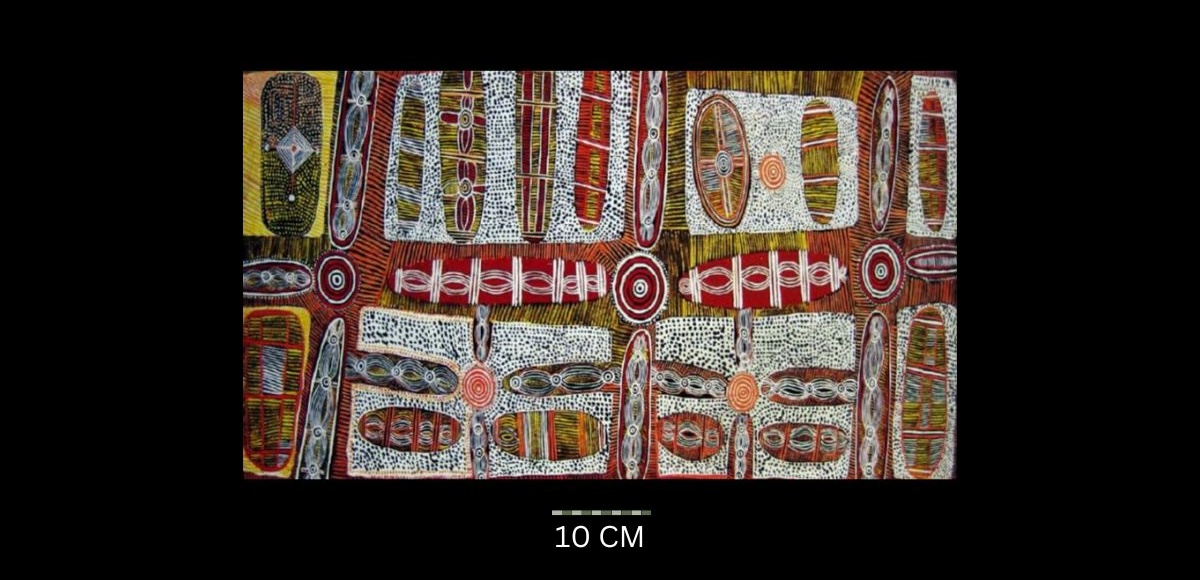
Bush Tucker Story 1971/72
Synthetic polymer powder paint on composition board,
71 x 30 cm
Hammer Price: A$48000
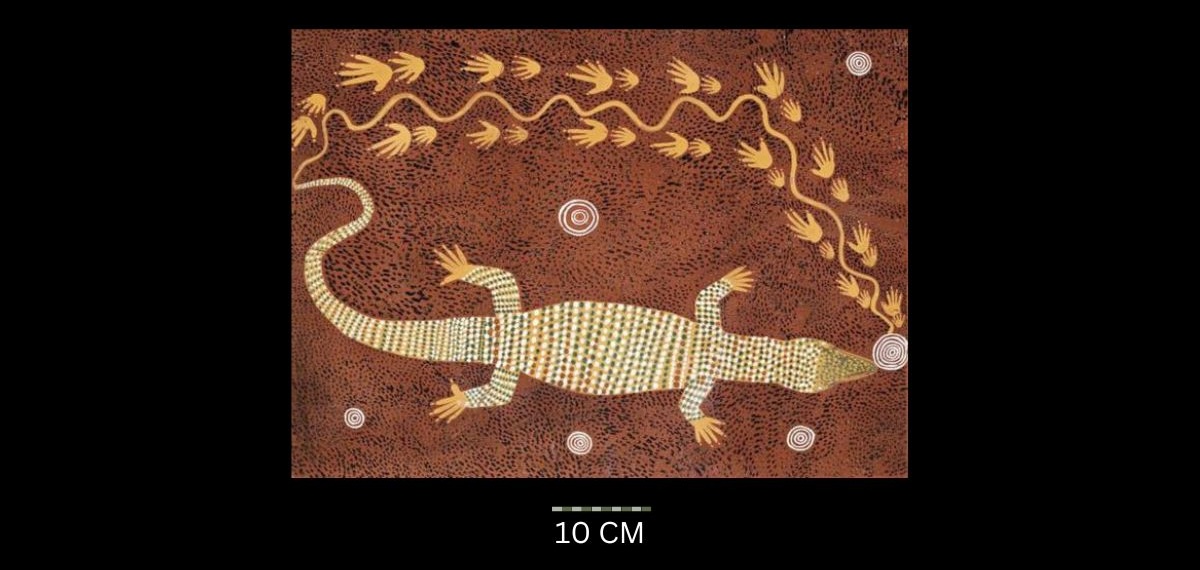
Lizard Story 1972
Synthetic polymer paint on composition board, bears Stuart Centre label with artist’s name ‘Anatara No.3(sic),’ and consignment number 17038 on reverse of frame,
61 x 46 cm
Hammer Price: A$9,500
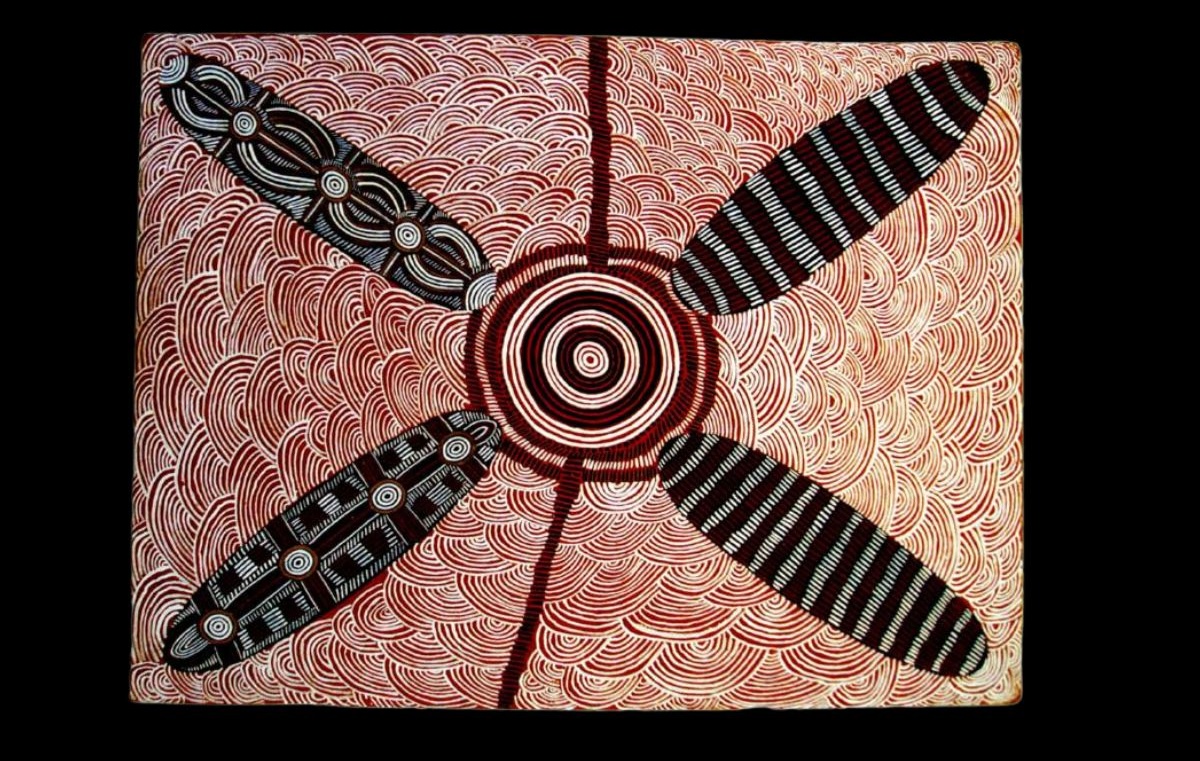
Pakarangura 1972
Synthetic polymer powder paint on composition board
No size recorded
Hammer Price: A$46,000
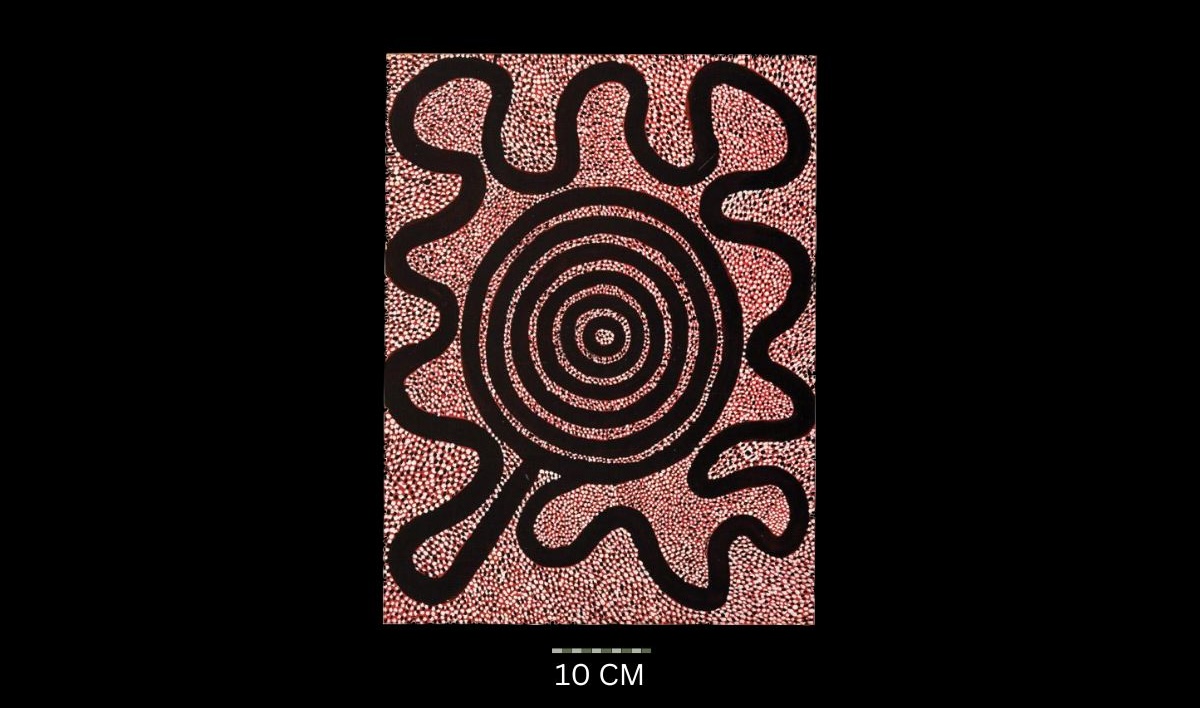
Snake Dreaming, Circa 1972
Synthetic polymer paint on board,
57 x 43 cm
Hammer Price: A$37,000
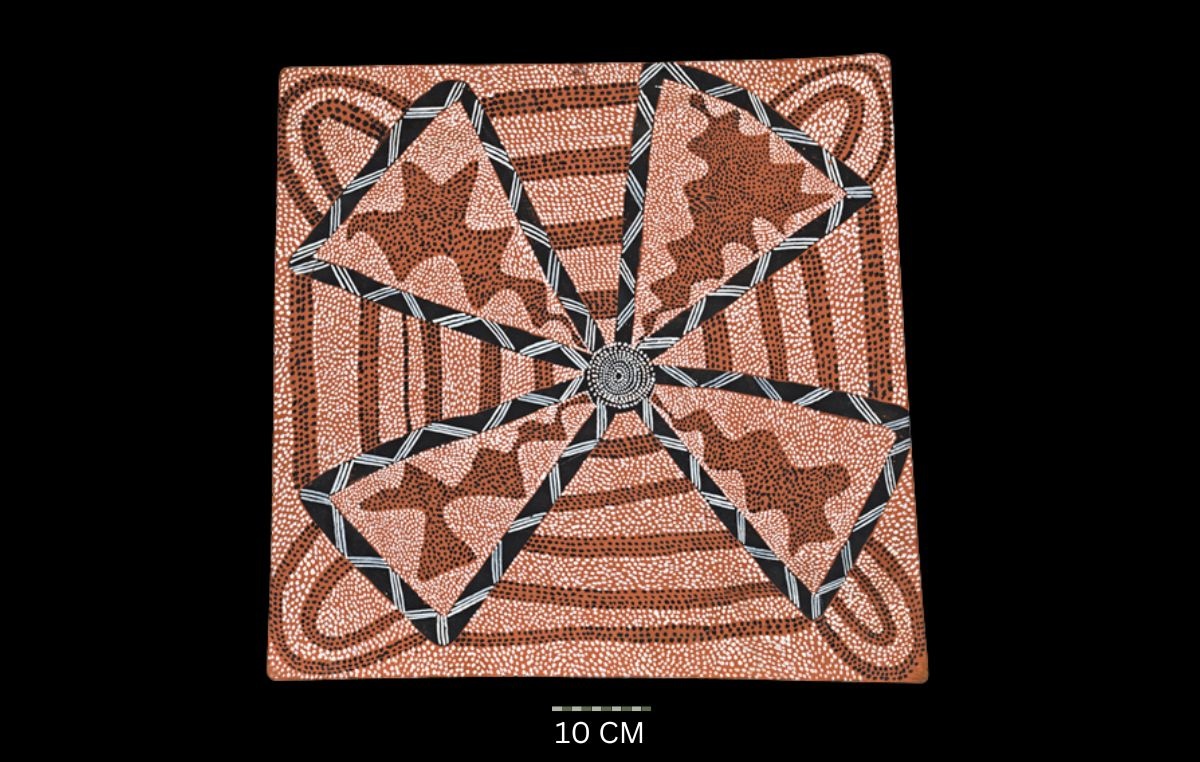
Untitled, C1972
Synthetic polymer paint on composition board, inscribed verso, artist’s name, date,
54 x 49 cm
Hammer Price: A$35,000

Untitled Tingari Painting 1972
Synthetic polymer paint on composition board, bears artist’s initial and Stuart Art Centre consignment number 19329 on the reverse,
73.5 x 62 cm
Hammer Price: A$35,000
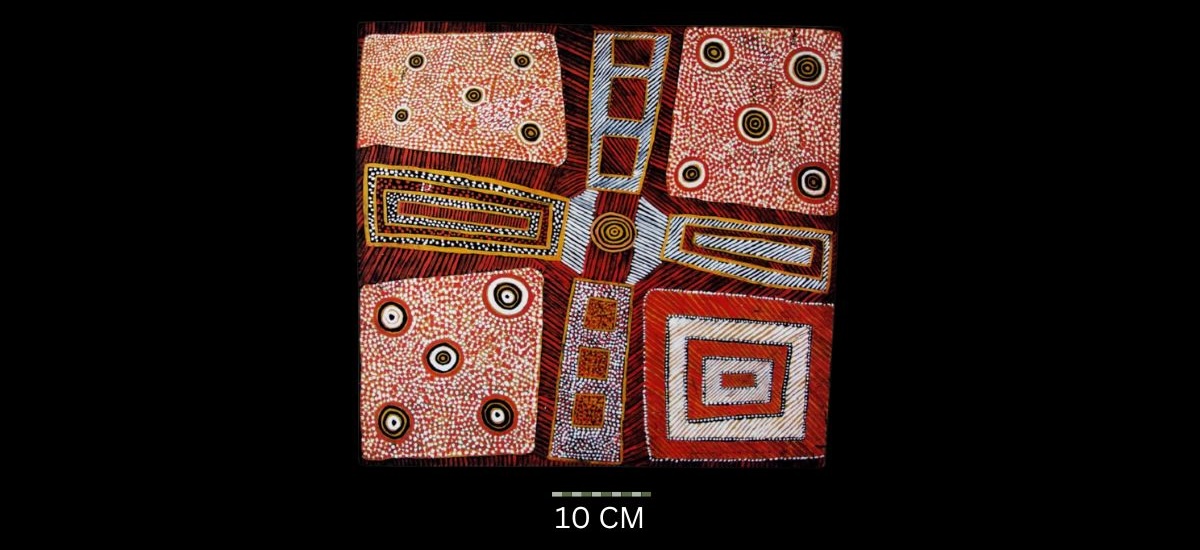
Kuntarrinytjana 1972
Synthetic polymer powder paint on composition board,
48.5 x 45 cm
UNSOLD
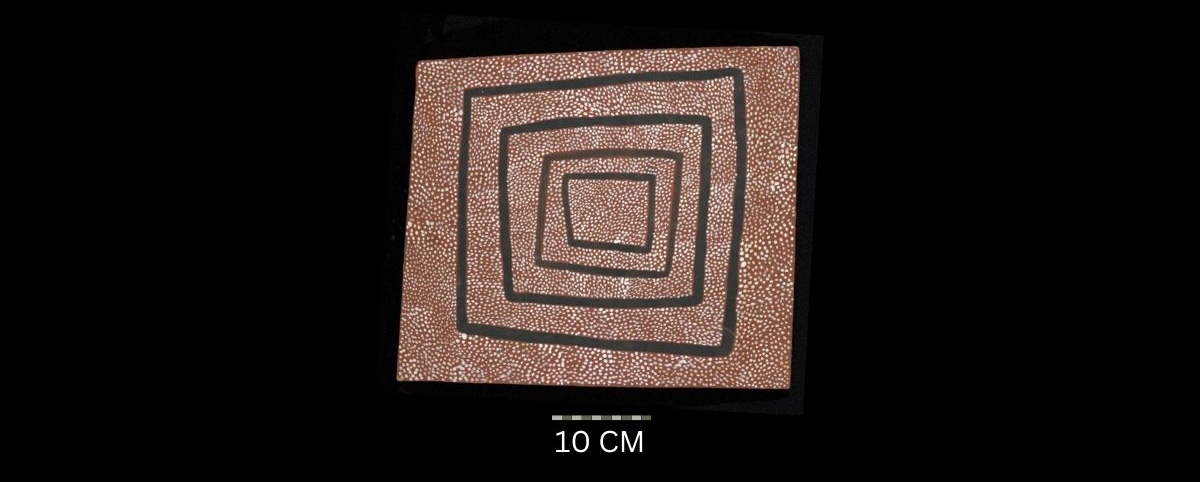
Rat Kangaroo Dreaming
Synthetic polymer paint on composition board, inscribed ‘sold Fannin phot’ and numbered in chalk ‘19332A’ on the reverse,
41 x 35.8 cm
Hammer Price: A$50,000
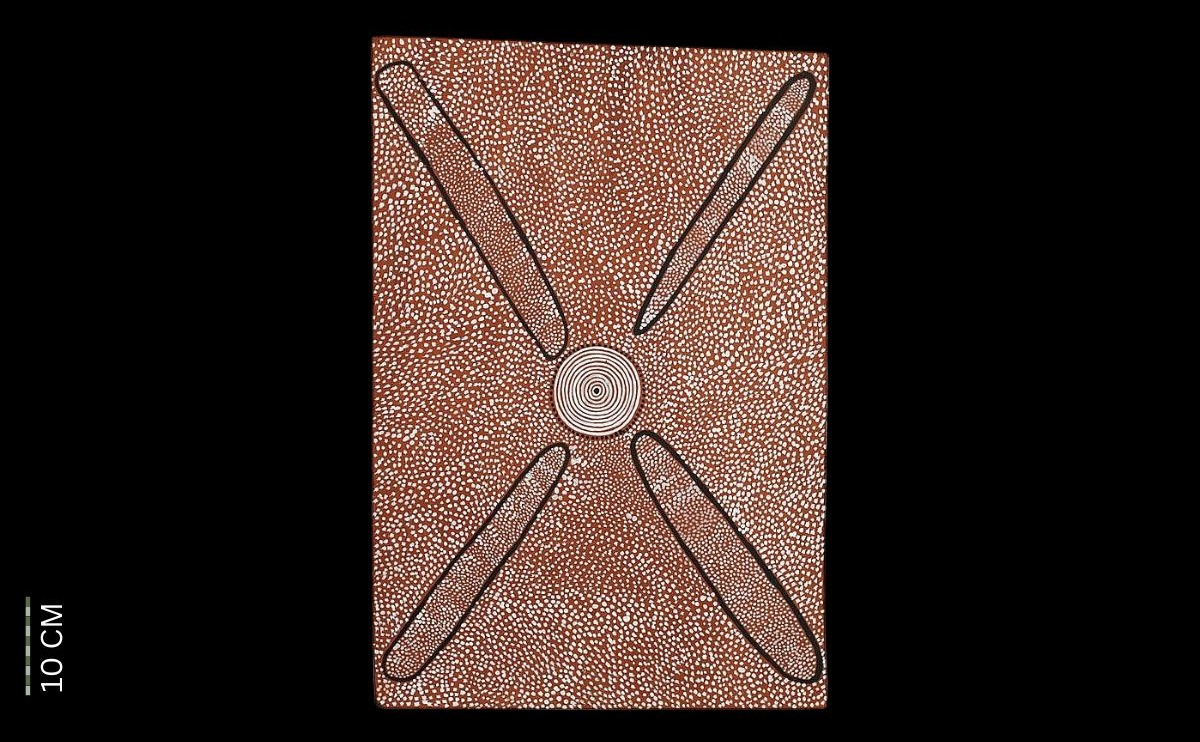
Untitled (Tingari Ceremony) (1972)
Synthetic polymer paint and natural earth pigments on composition board,
46.5 x 31.5 cm
UNSOLD

A Cave Dreaming 1972
Synthetic polymer/powder paint on composition board
No size recorded
Hammer Price: A$65,000

Untitled 1972
Synthetic polymer powder paint on composition board, bears signed artist’s name ‘anatara’ (sic) and consignment number 19466 on the reverse,
70.5 x 57.5 cm
Hammer Price: A$14,500
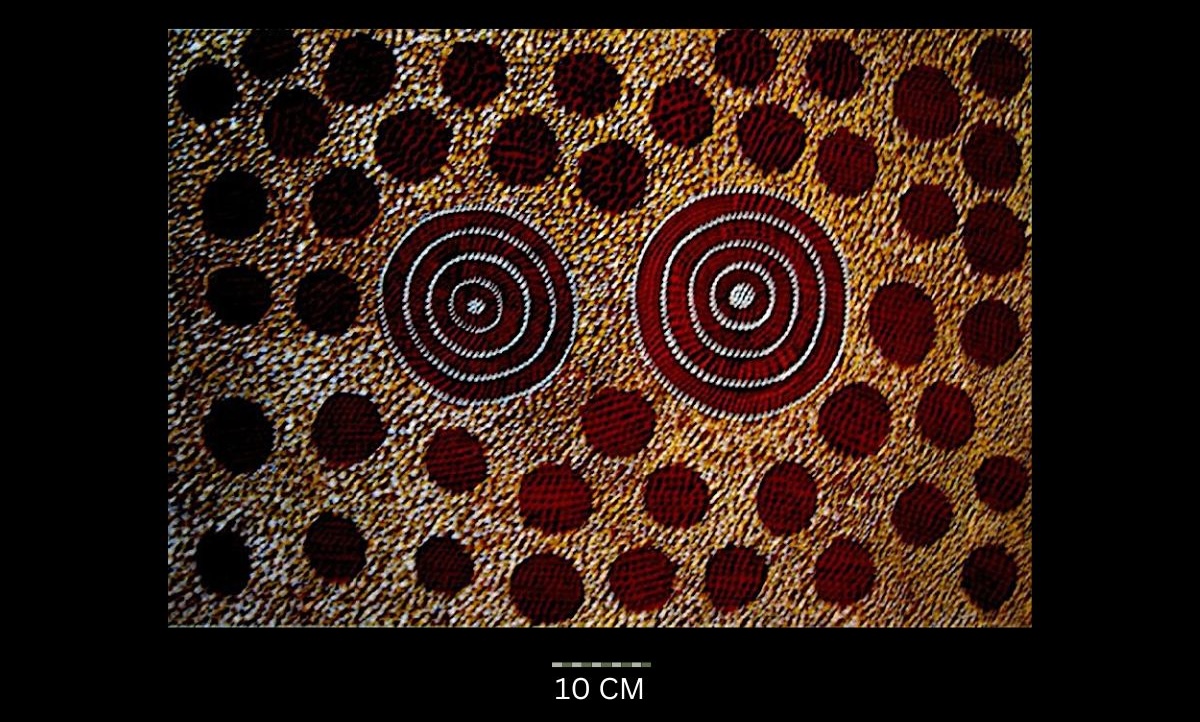
Women Gathering Ochres 1972
Synthetic polymer paint on composition board, bears number N34 on the reverse,
86.5 x 58.5 cm
Hammer Price: A$23,000

Untitled (1972)
Synthetic polymer paint on composition board,
73.5 x 62 cm
UNSOLD
Anatjari Tjakamarra Artwork 1973

Tinikutinupa 1973
Synthetic polymer powder paint on composition board,
57.5 x 43 cm
Hammer Price: A$40,000

Men’s Corroboree Dreaming in a Cave
Synthetic polymer paint on composition board,
50.5 x 45 cm
Hammer Price: A$10,000

Story of a Woman’s Camp and the Origin of Damper 1973
Synthetic polymer powder paint on composition board, bears consignment number A731104 on the reverse,
122 x 92 cm
Hammer Price: A$320,000
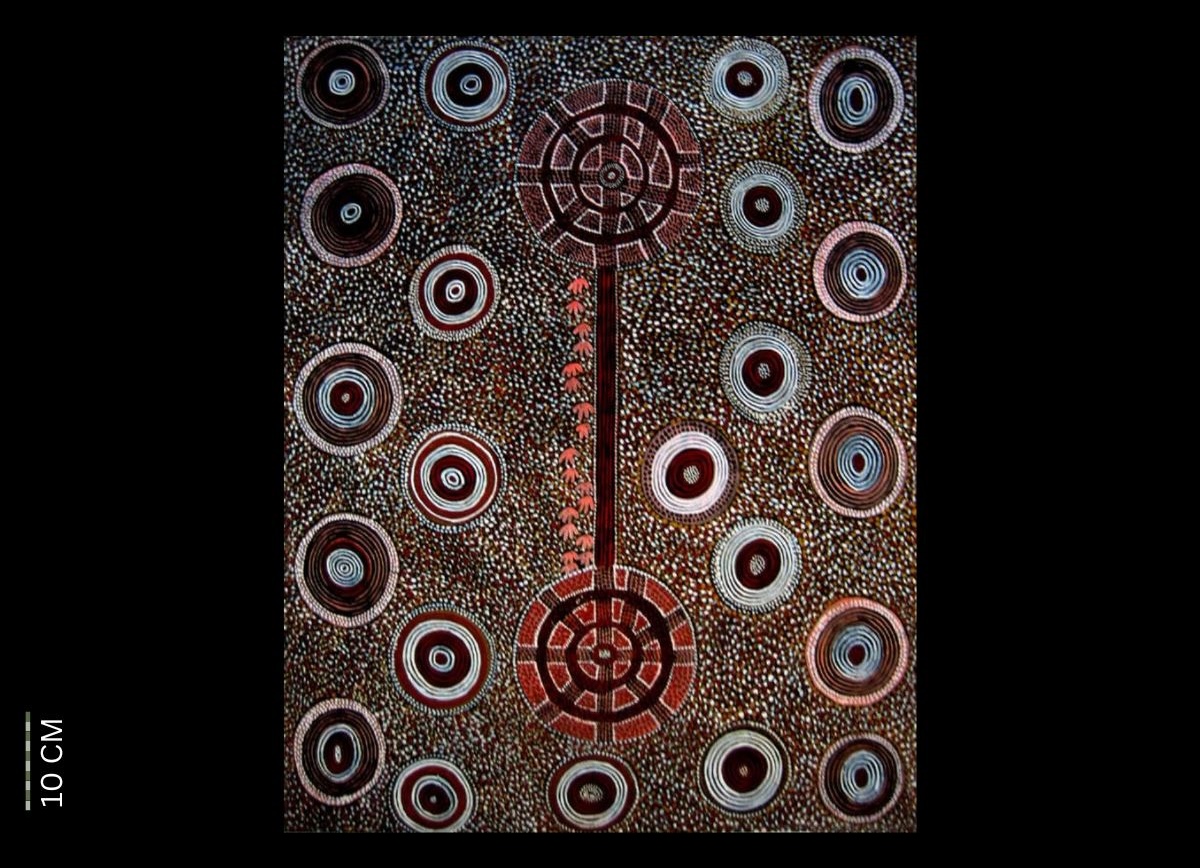
Kuningka
Synthetic polymer paint on composition board, bears Papunya Tula catalogue number A731078, title and a large annotated diagram on the reverse,
79 x 61 cm
Hammer Price: A$58,000
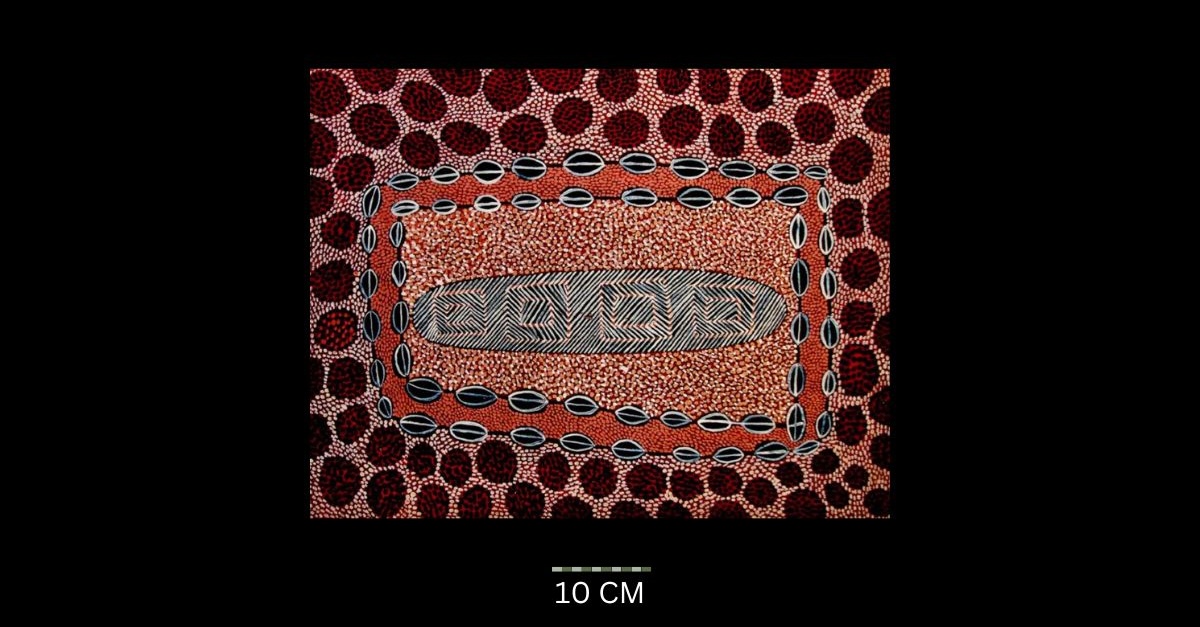
Ceremonial Ground Design c. 1973
Synthetic polymer powder paint on composition board, bears No. 32 on the reverse,
57 x 43 cm
UNSOLD
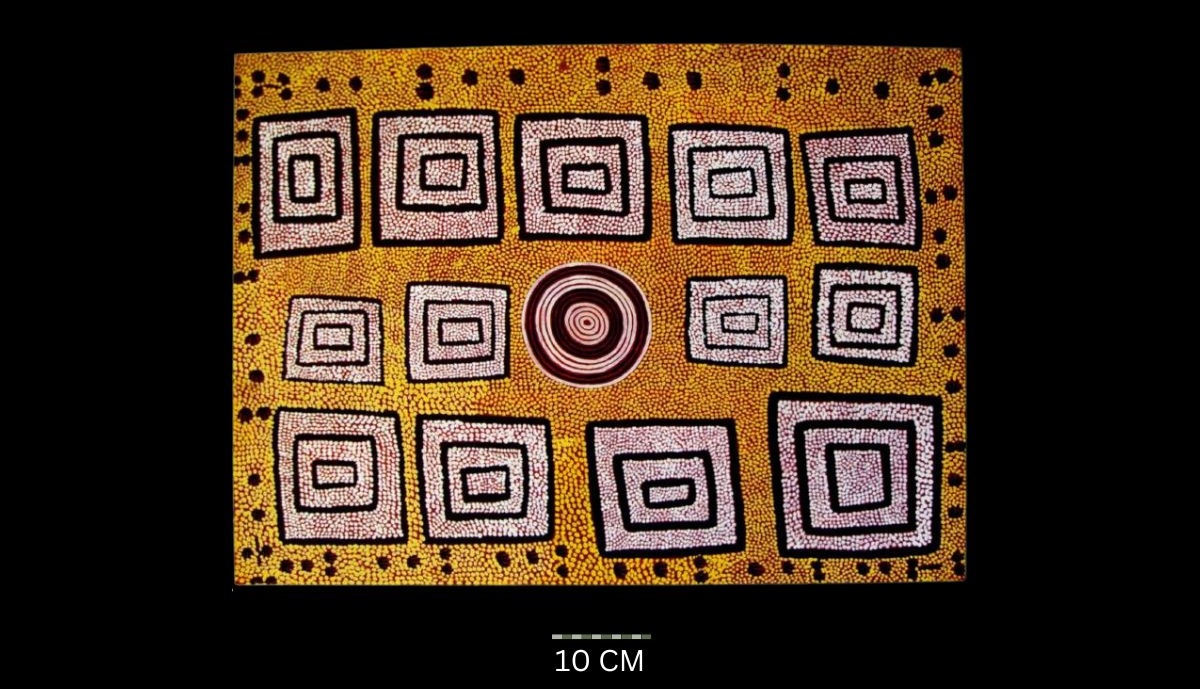
Kuningka 1973
Synthetic polymer powder paint on composition board, bears artist’s name, the title of the work, community, registered number A731065, date 1973
74.5 x 54 cm
Hammer Price: A$65,000
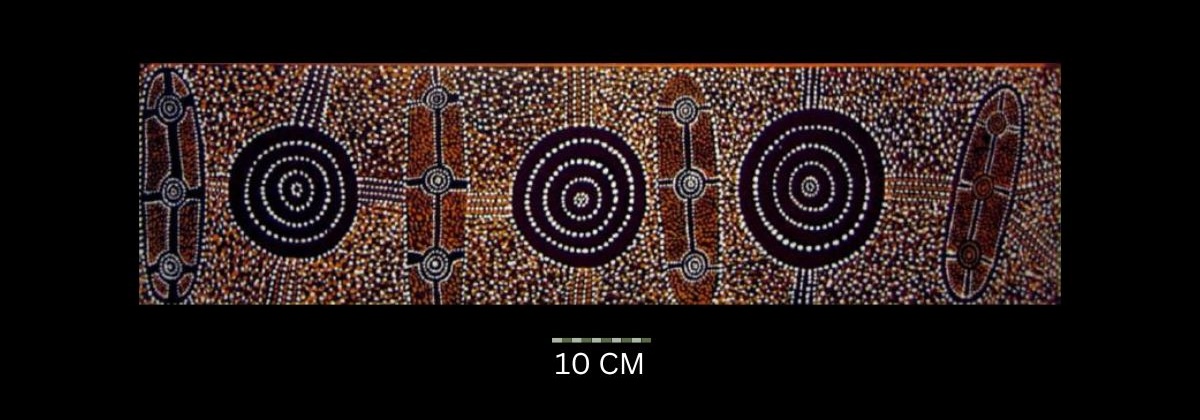
Origins of Soakages 1973
Synthetic polymer paint on composition board, bears Papunya Tula Artist’s catalogue number A730808 on the reverse,
92 x 22.5 cm
Hammer Price: A$8,000
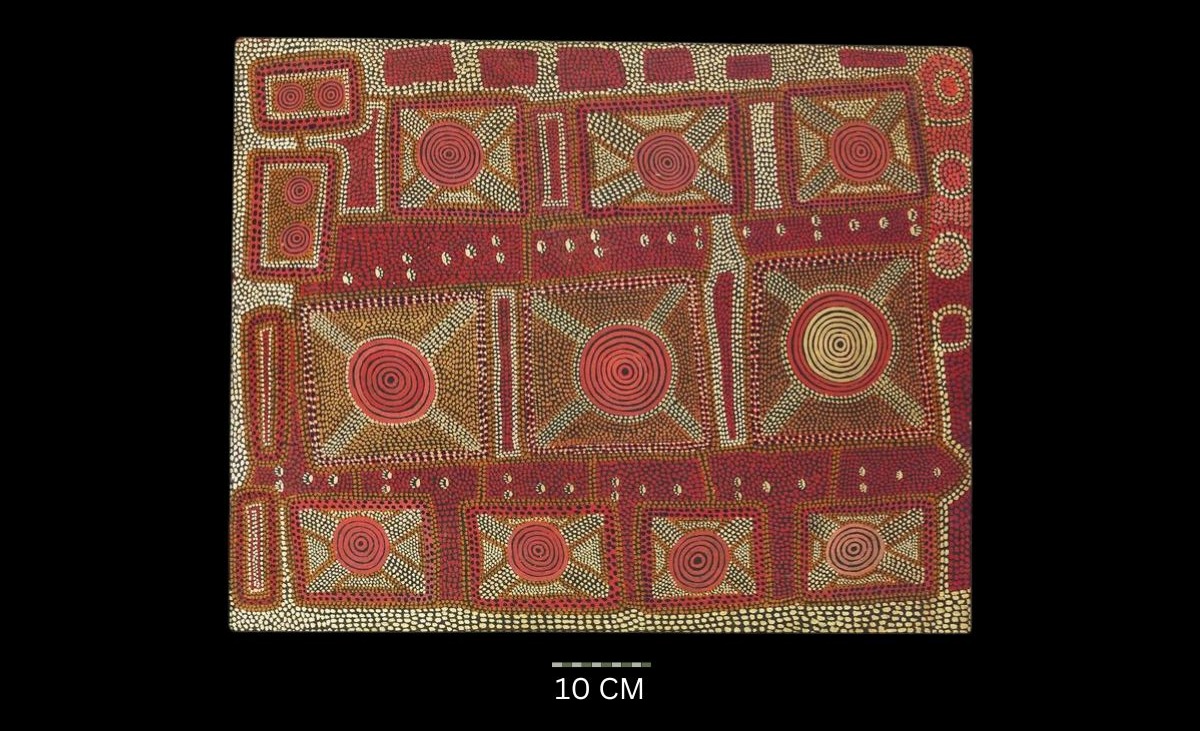
Rilynga, 1974
Synthetic polymer paint on composition board, inscribed verso with artist’s name,
76 x 61 cm
Hammer Price: A$25000
Anatjari Tjakamarra: Artistic Transition and Secular Storytelling (1974 -1980)
By 1974, Anatjari Tjakamarra—a pioneering figure in the Papunya Tula art movement—underwent a significant transformation in both materials and subject matter. Shifting from particle board to canvas and canvas board, his work began to reflect the evolving socio-political climate within the Aboriginal art market.
This change in anatjari tjakamarra artwork was in part a response to growing concerns from senior Aboriginal custodians who felt that some early Papunya artworks had revealed too much sacred or restricted cultural knowledge to uninitiated viewers. As a result, Anatjari, along with many of his contemporaries such as John Kipara tjakamarra and Uta Uta Tjangala, turned toward the depiction of more secular Dreaming narratives—especially the Tingari Cycle and children’s stories.
The visual language of this period is marked by concentric circles—representing sacred sites or waterholes—interconnected by wavy lines composed of parallel dot rows, symbolizing paths or journey lines. While still deeply rooted in Aboriginal cosmology, the works adopted a more generalized, symbolic format that catered to both cultural preservation and growing market demand.
During this era, Anatjari continued to use his signature optical color blending through dotting, but he also began to adopt direct color mixing techniques. For example, instead of simulating pink through layered dotting, he would now mix white and red pigments directly on the palette. This shift streamlined his process and aligned his practice with evolving trends in Western Desert art.
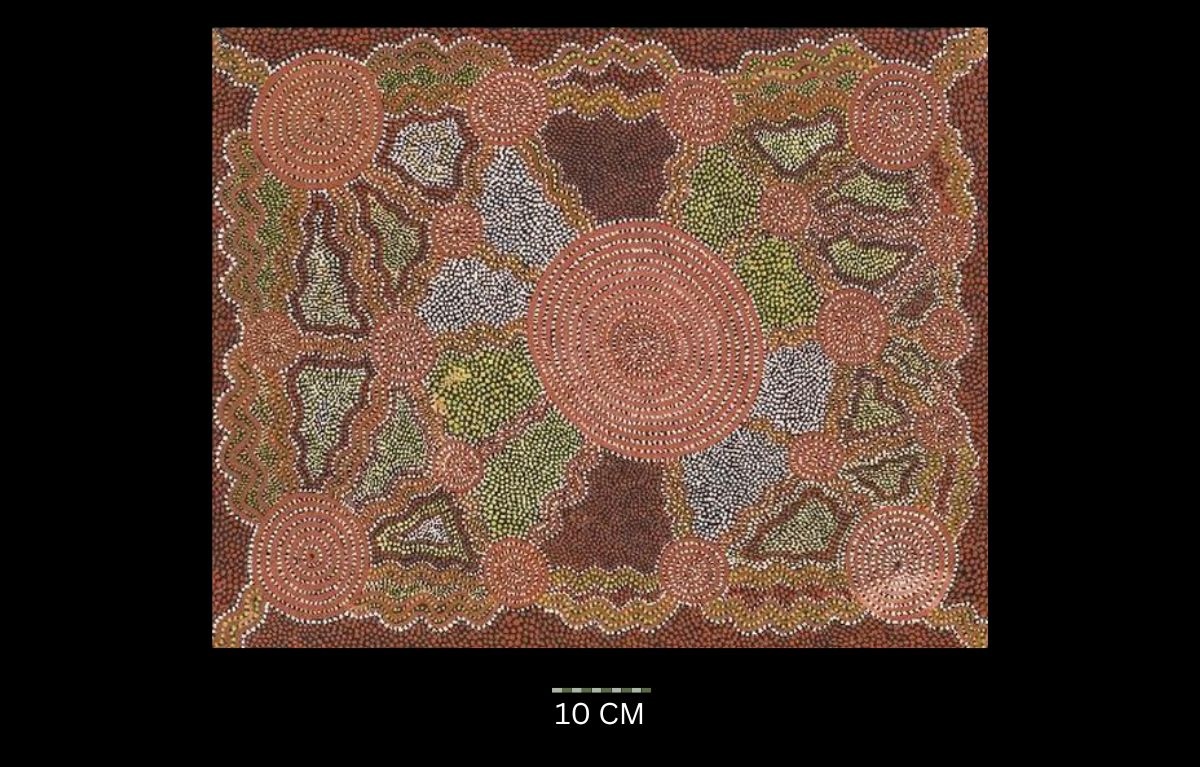
Ngumulynga (Two Boys), 1974
Synthetic polymer paint on canvas board,
76 x 60.5 cm
UNSOLD
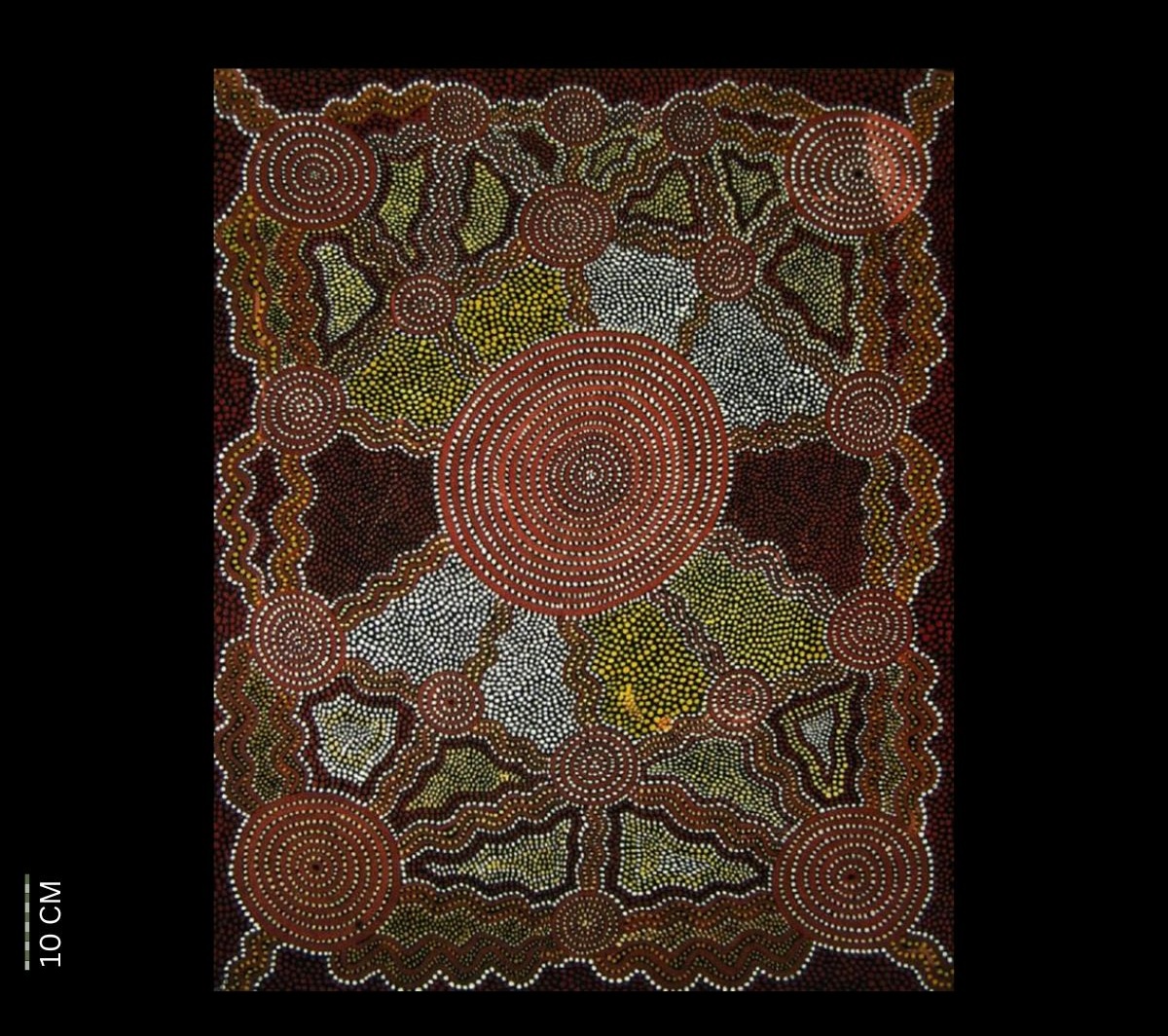
Ngumulynga (Two Boys) 1974
Synthetic polymer paint on canvas board,
76 x 60.5 cm
UNSOLD
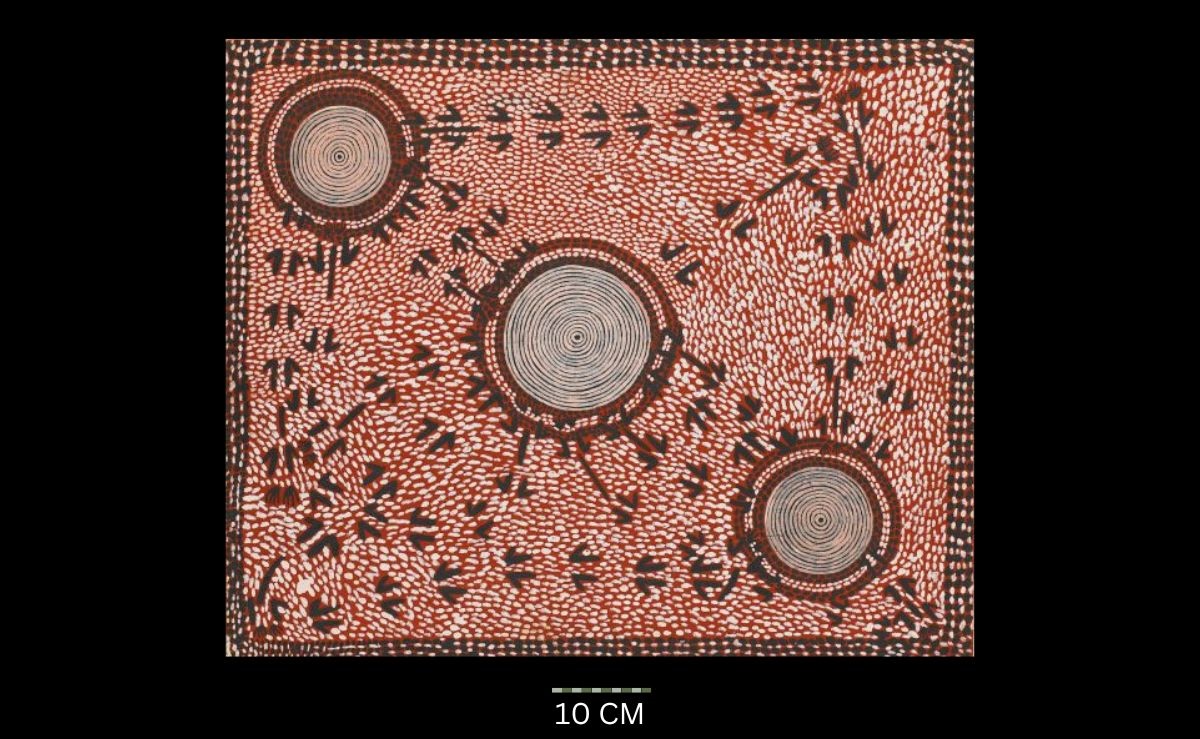
Mala (Rock Wallaby) at Winganjirinya
Synthetic polymer paint on canvas board,
61 x 50.5 cm
Hammer Price: A$6,800

Untitled c. 1975
Synthetic polymer paint and natural earth pigments on canvas board, bears artist’s name on reverse,
61 x 45.5 cm
UNSOLD
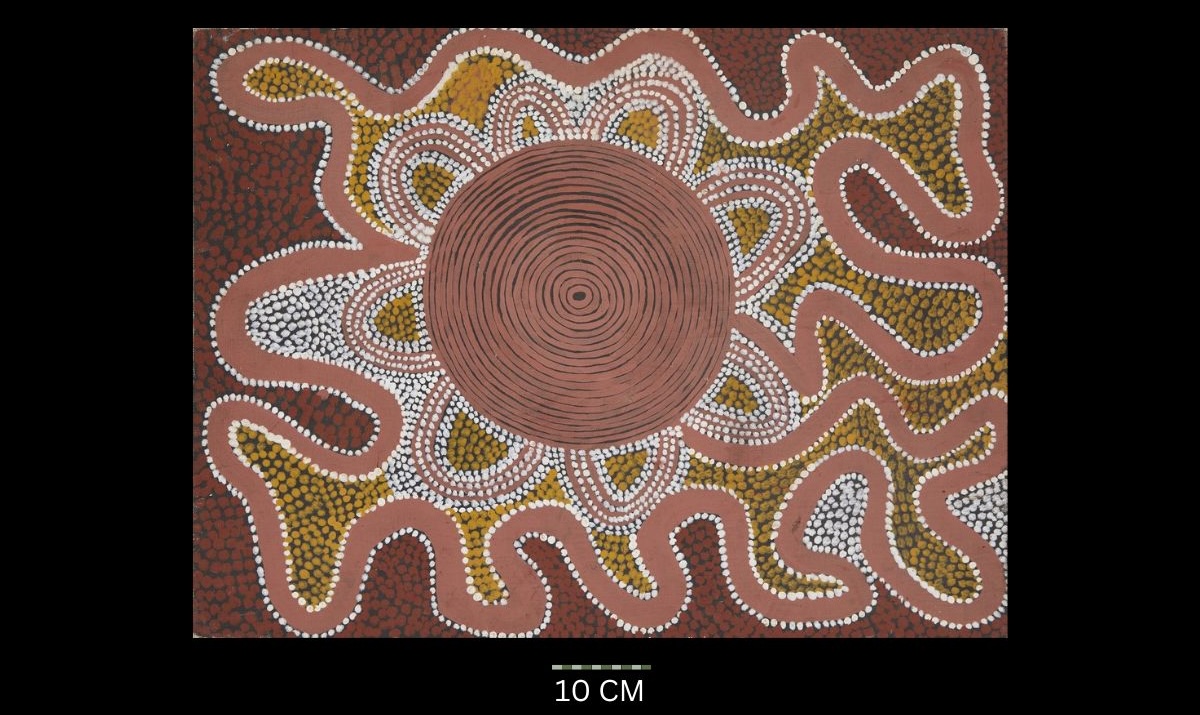
Snake Dreaming at Kantawarrany 1978
Synthetic polymer paint on canvasboard,
60.9 x 45.7 cm
Hammer Price: A$8,000
Post-1980: Monumental Scale and Market Influence
In the years following 1980, Anatjari’s artworks grew significantly in scale, often utilizing large-format canvases. While his stylistic approach remained consistent with the post-1974 secular period, the new monumental dimensions gave some of his paintings a striking presence.
One notable example, Tingari Men’s Travel from Kulkuta, exemplifies the elegance and formal clarity of this later phase. The simplicity of composition and precision in dotting highlight Anatjari’s mastery of the medium. However, some art critics and scholars have noted that many of these later works, while visually appealing, appear to lack the emotional depth and cultural intimacy that defined his earlier pieces. The influence of commercial demand may have played a role in the standardization and repetition of themes during this time, leading to a perceived creative stagnation.
Nonetheless, Anatjari’s late-period works remain crucial to the history of contemporary Aboriginal art, offering insight into how artists balanced cultural responsibility, artistic evolution, and economic realities in a rapidly globalizing art world.
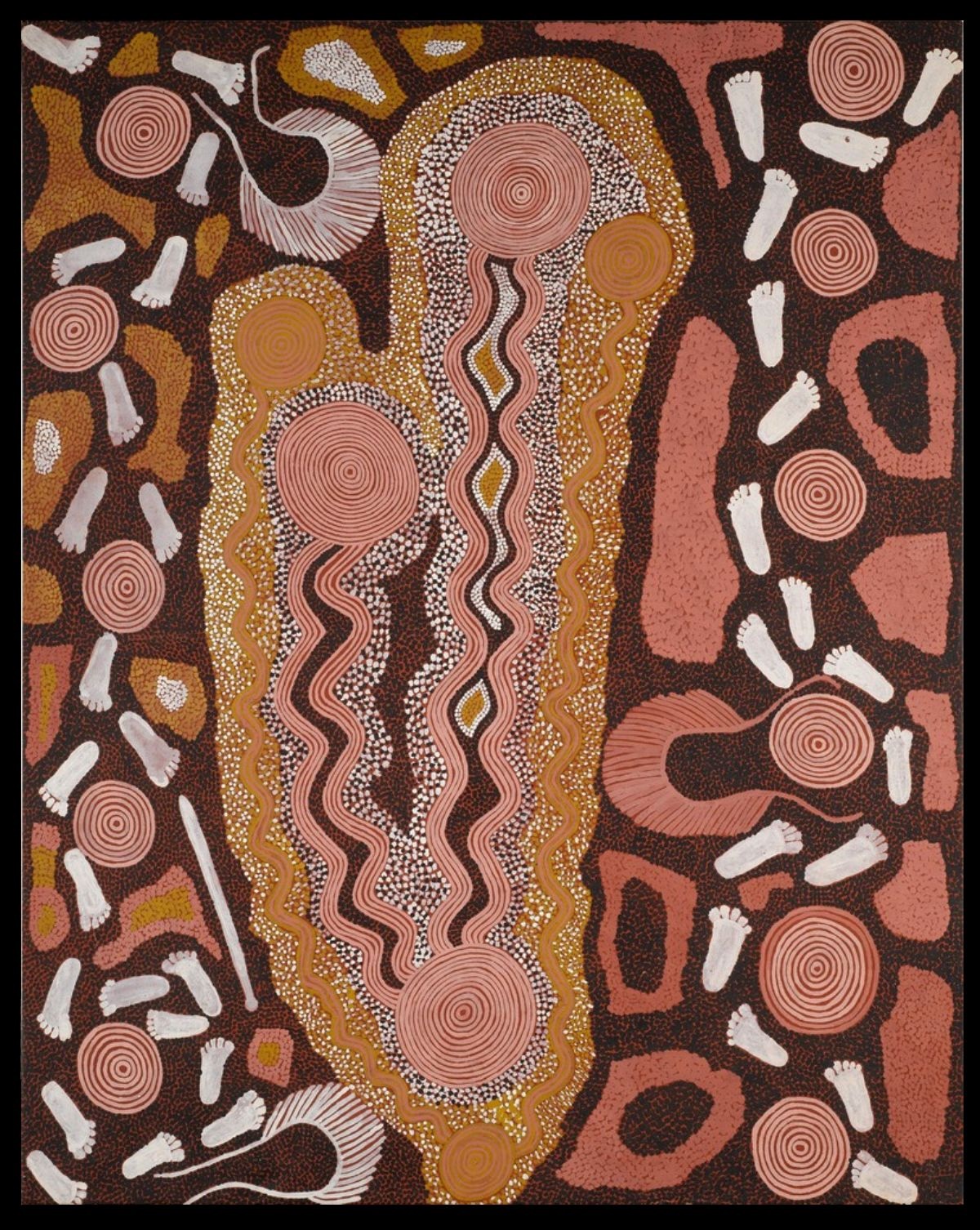
Tjilingaanya, 1982
Synthetic polymer paint on canvas, bears artist’s name and Papunya Tula catalogue number AT820614 on the reverse,
121 x 152 cm
Hammer Price: A$45,000

Sons and Orphans Near Kurlkurta 1984
Synthetic polymer paint on canvas
No size recorded
Hammer Price: A$11,000
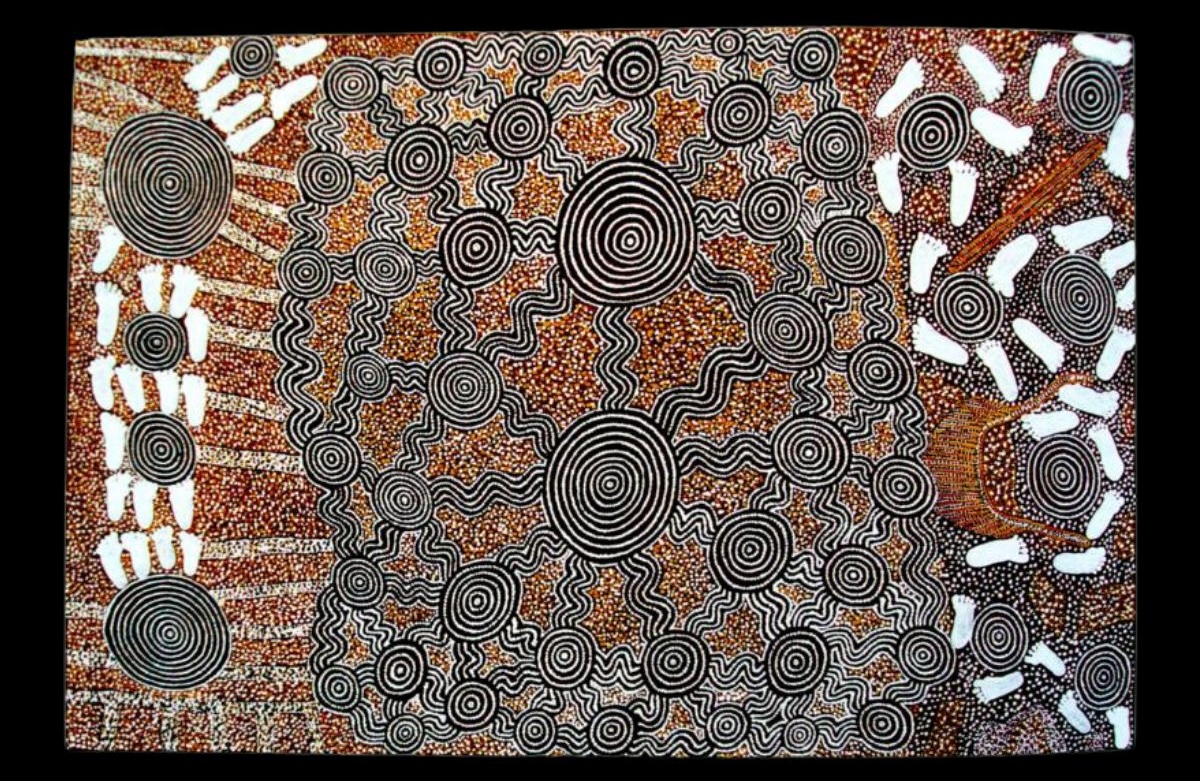
Kurlkurta 1984
Synthetic polymer paint on canvas
No Size recorded
Hammer Price: A$16,000
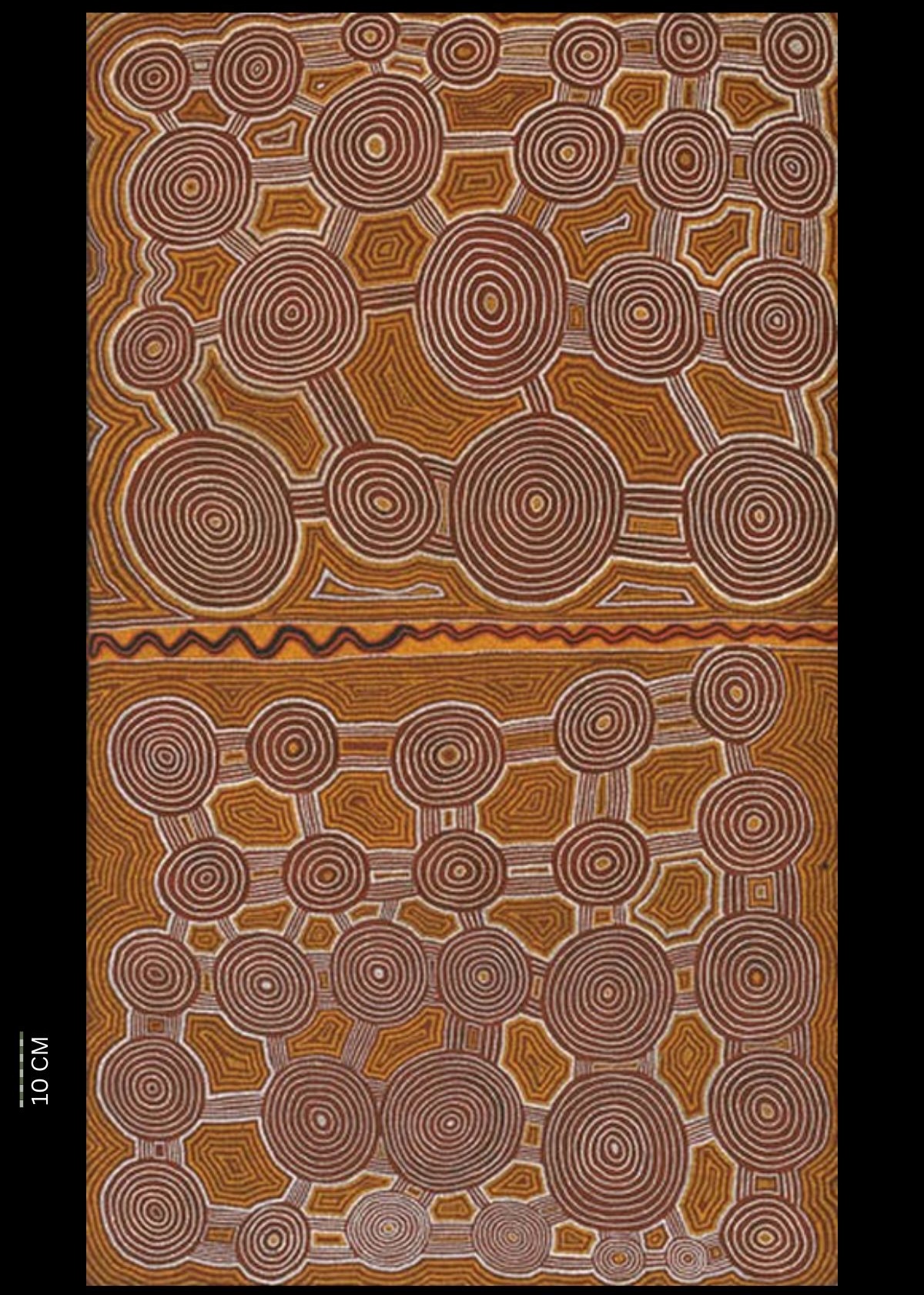
Untitled (Designs Associated with Tingari Ceremonies at Ngaminya), 1984
Synthetic polymer paint on linen, inscribed verso with dimensions and Papunya Tula Artists catalogue number AT AT950835,
106.5 x 181 cm
Hammer Price: A$6500
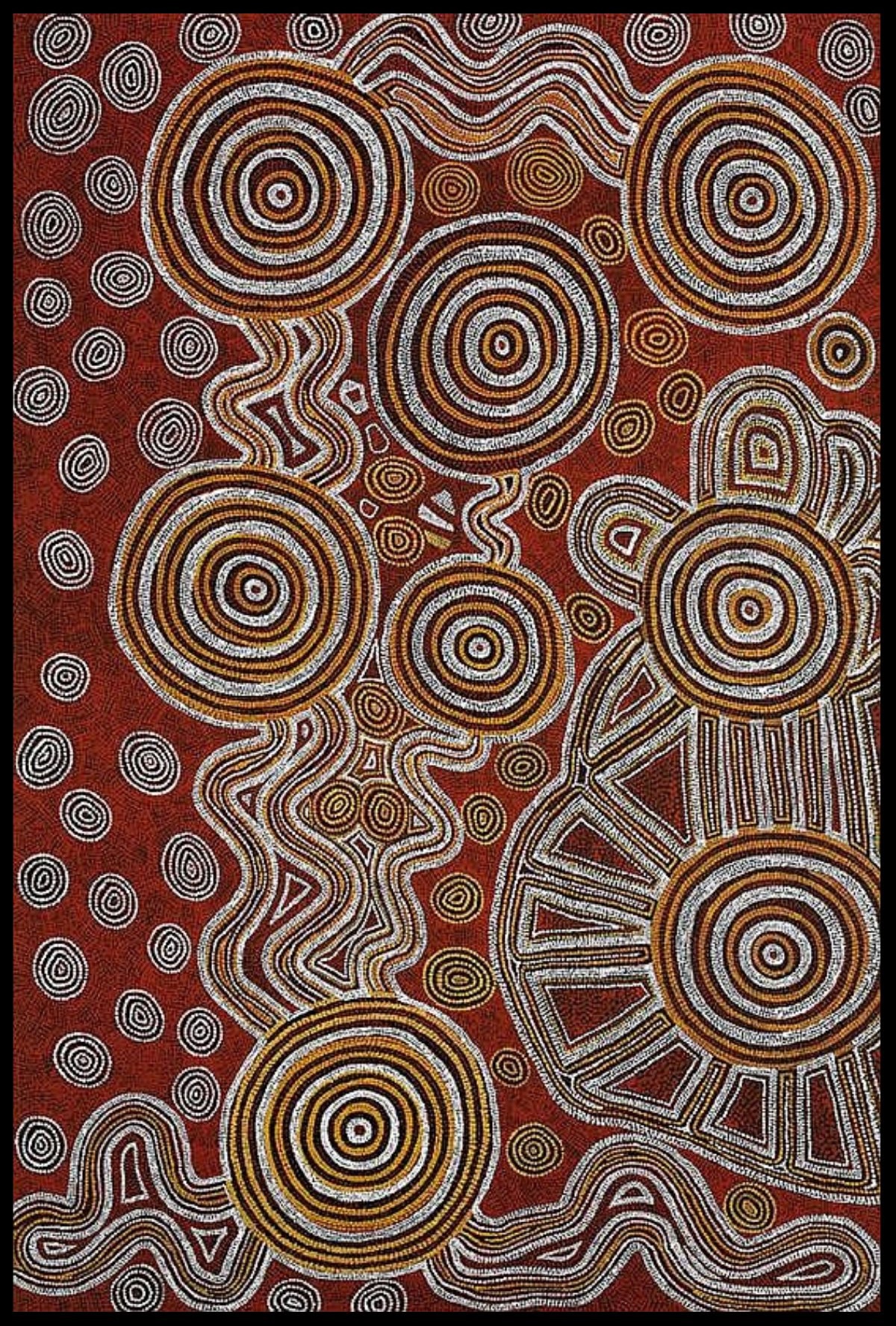
Sons and Orphans Near Kurlkurta (1984)
Synthetic polymer paint on linen,
183 x 122 cm
Hammer Price: A$20,000

Tjitjikujara Minmakura Kakara Yanimpa 1985
Synthetic polymer paint on canvas, bears artists name place and date of execution on the reverse,
122 x 91.5 cm
Hammer Price: A$4750
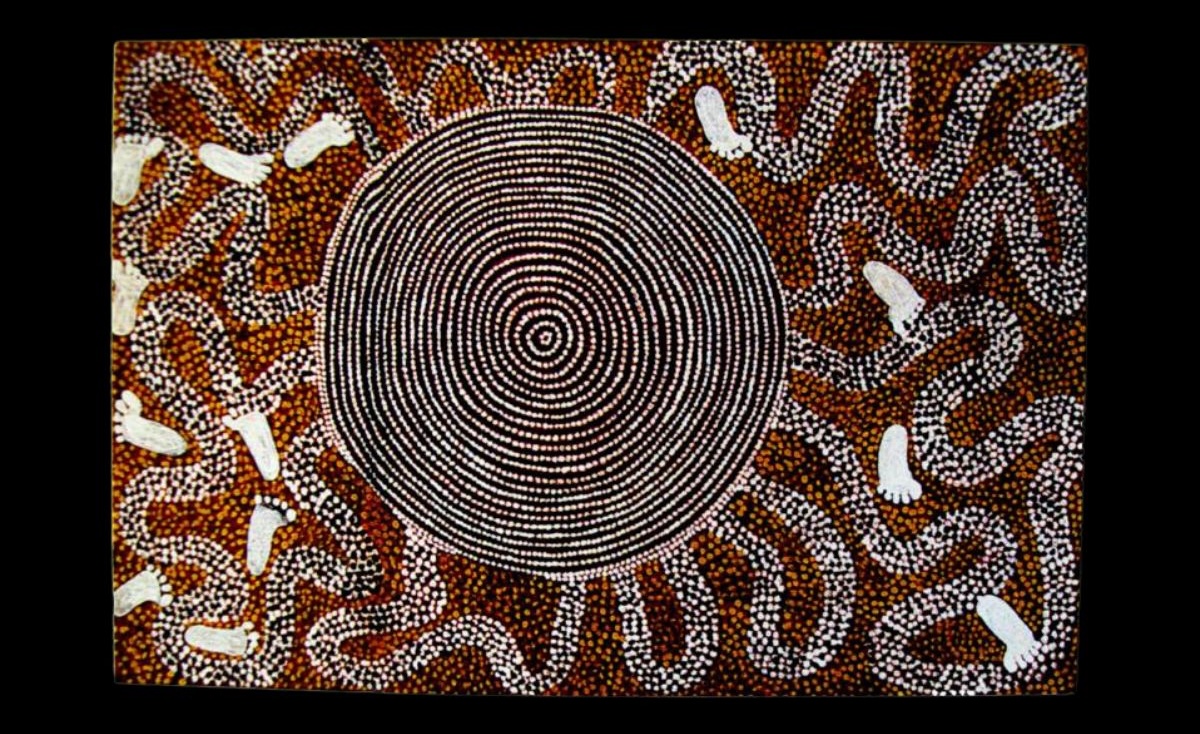
Minmakuya c. 1986
Synthetic polymer paint on canvas
No size recorded
Hammer Price: A$4000
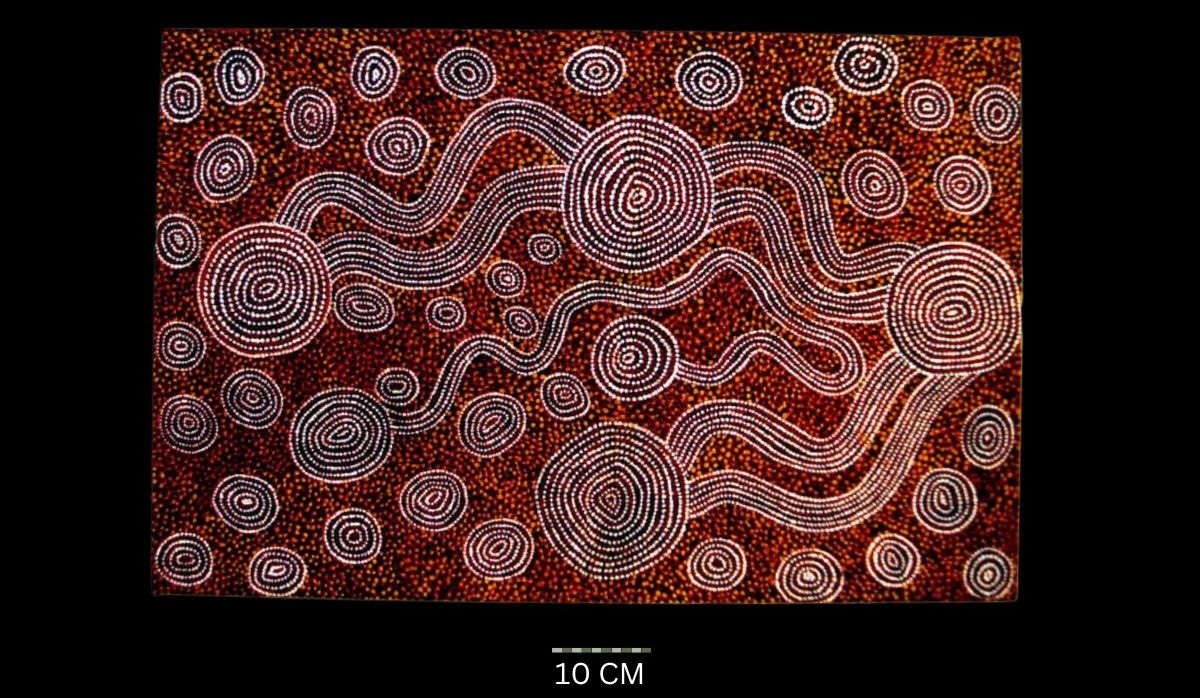
Minmakuya Kakalitjarra c. 1986
Synthetic polymer paint on canvas,
88 x 57.5 cm
Hammer Price: A$3200
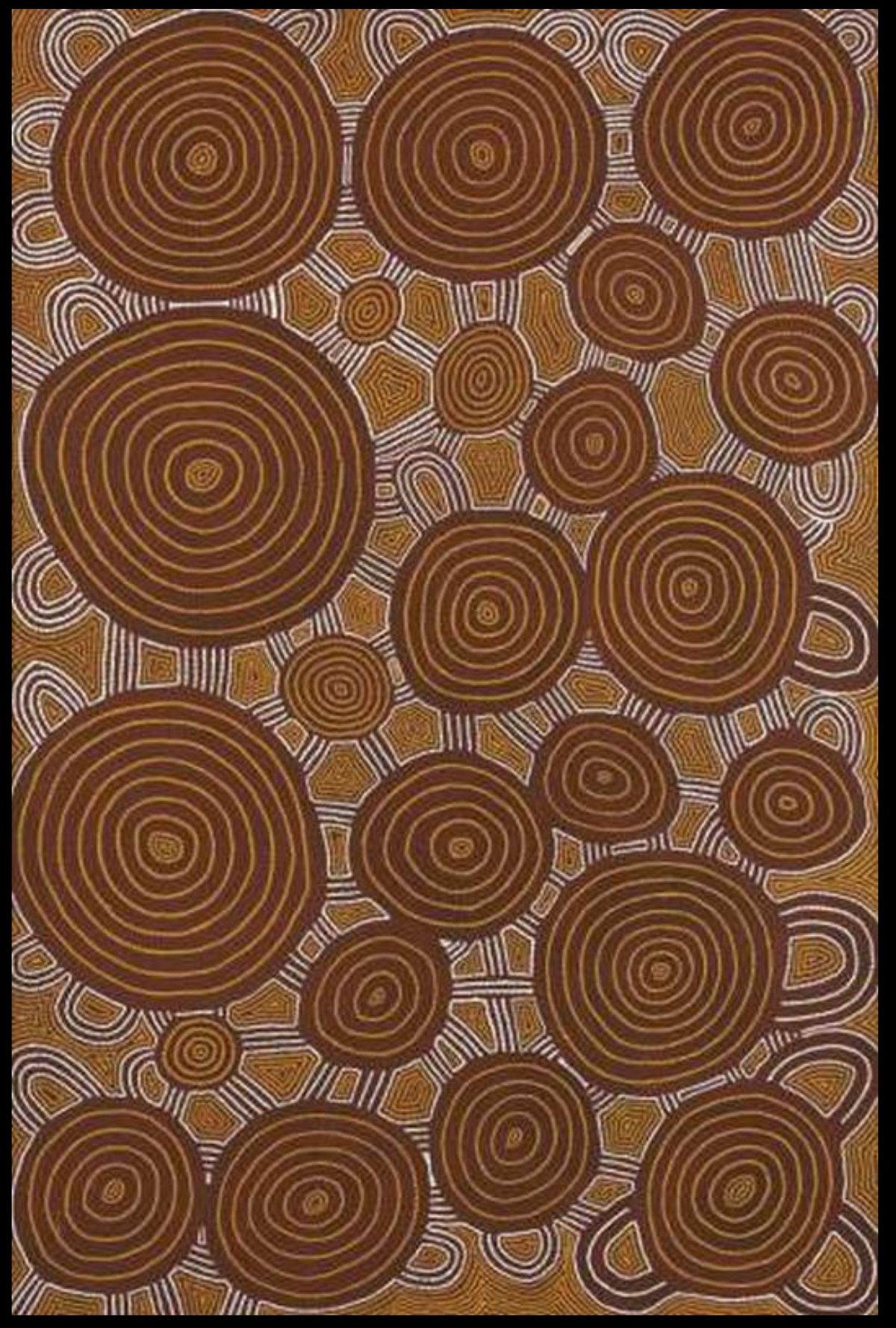
Untitled, 1987
Synthetic polymer paint on linen, inscribed on stretcher verso: 870659 Anatjari Tjakamarra,
181 x 120.5 cm
Hammer Price: A$7500

Wallaby Dreaming at Paranya
Synthetic polymer paint on linen, bears Papunya Tula Artists catalogue number AT870489 on the reverse,
121 x 91 cm
UNSOLD

The Rockhole Site of Wakulla 1987
Synthetic polymer paint on linen,
79 x 40.5 cm
Hammer Price: A$1800
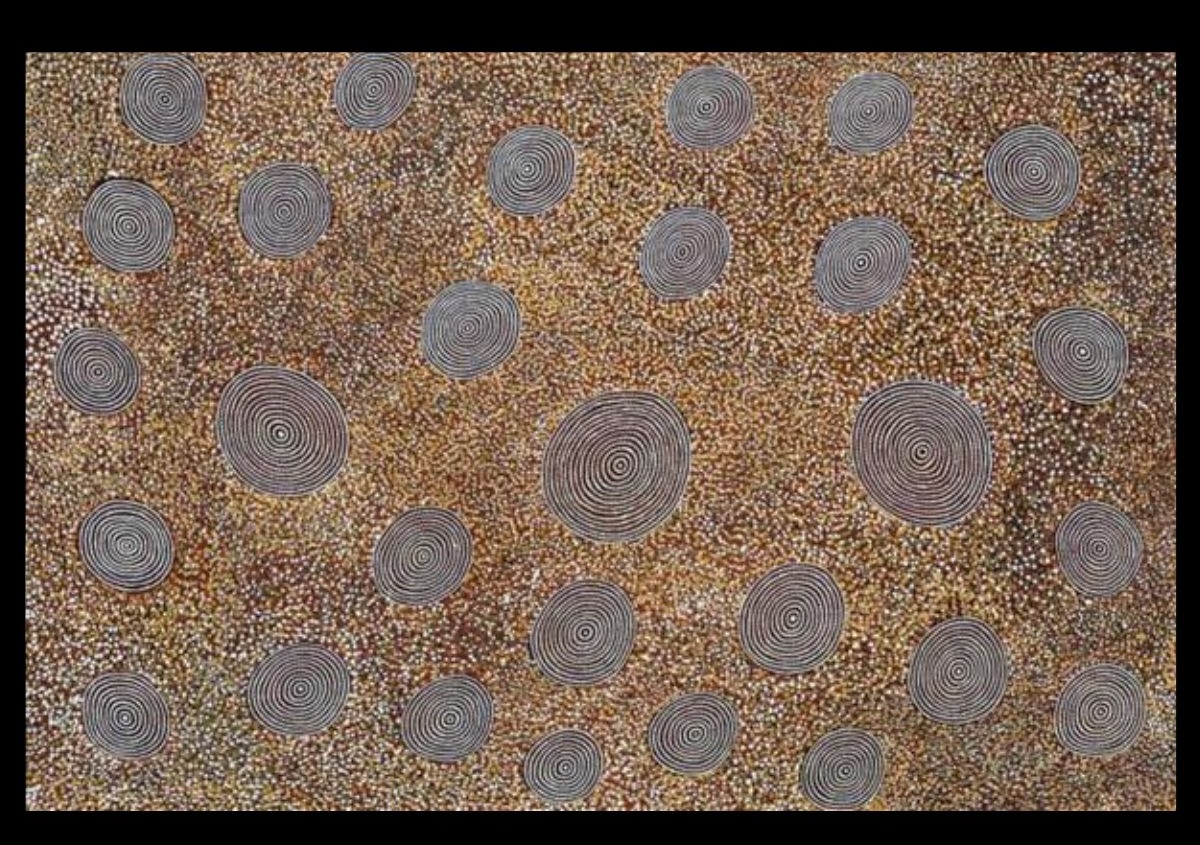
The Tingari at Yawalyurru 1987
Synthetic polymer paint on canvas, bears ‘East to West’ exhibition name, catalogue number (95), location (Tandanya 1990) and title on the reverse of the stretcher, and Papunya Tula Artists catalogue number AT870668
No size recorded
UNSOLD
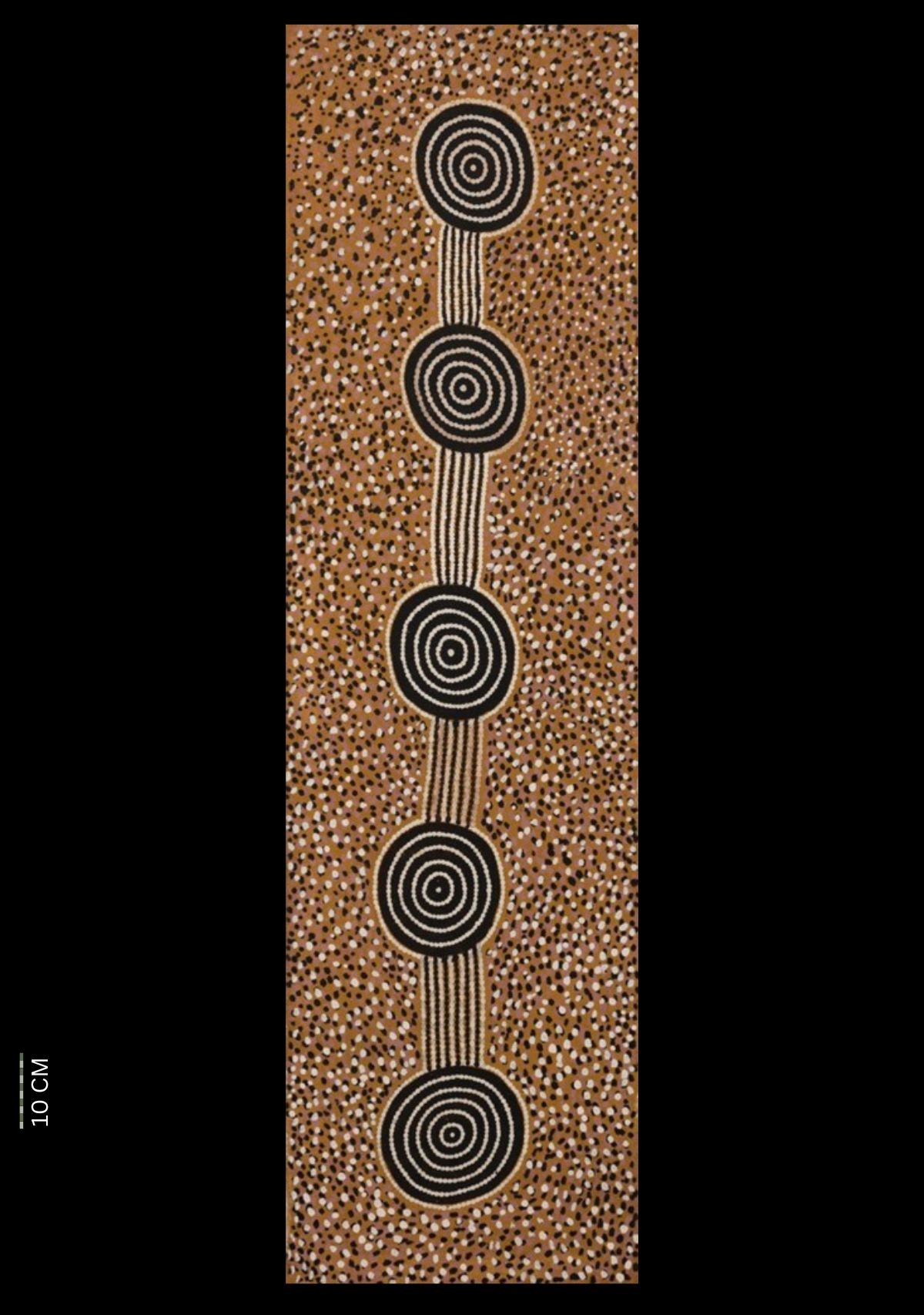
Untitled 1987
Acrylic on canvas, inscribed verso Anatjari Tjakamarra, catalogue no. AT811131, Papunya Tula Artists certificate of authenticity accompany’s this work,
163.5 x 46 cm
Hammer Price: A$4000

Tingari Men at Kulkuta 1987
Synthetic polymer paint on linen, bears signed Papunya Tula Artists catalogue number AT870401 on the reverse,
182 x 122 cm
Hammer Price: A$26,000
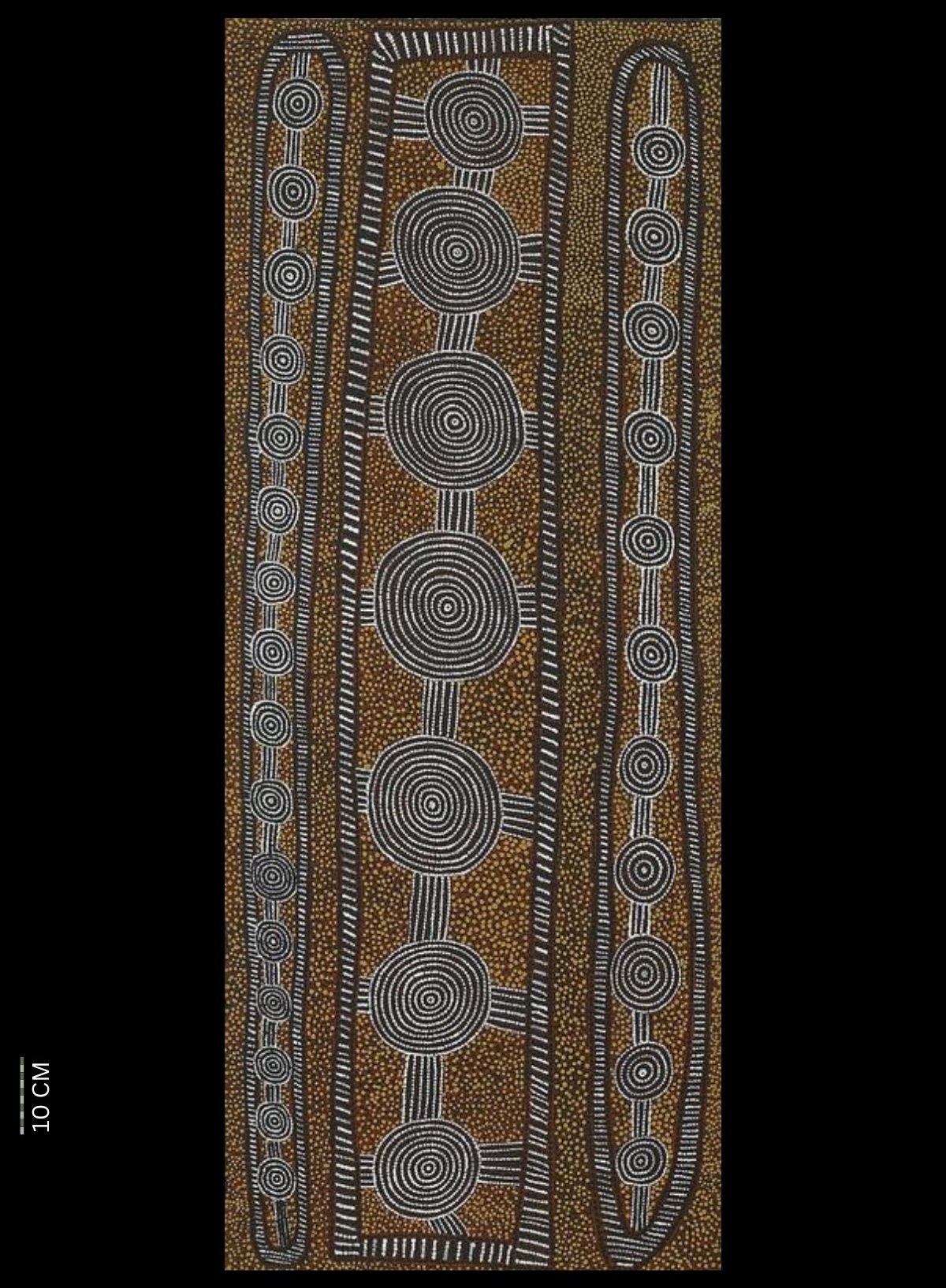
Untitled (Tjuntupul) (1988)
Synthetic polymer paint on canvas,
152.8 x 61.3 cm
UNSOLD

Tingari Painting 1988
Synthetic polymer paint on linen, bears Papunya Tula catalogue number AT880182, and artist’s name on the reverse, and exhibition stamp on the stretcher,
182 x 91 cm
Hammer Price: A$5000
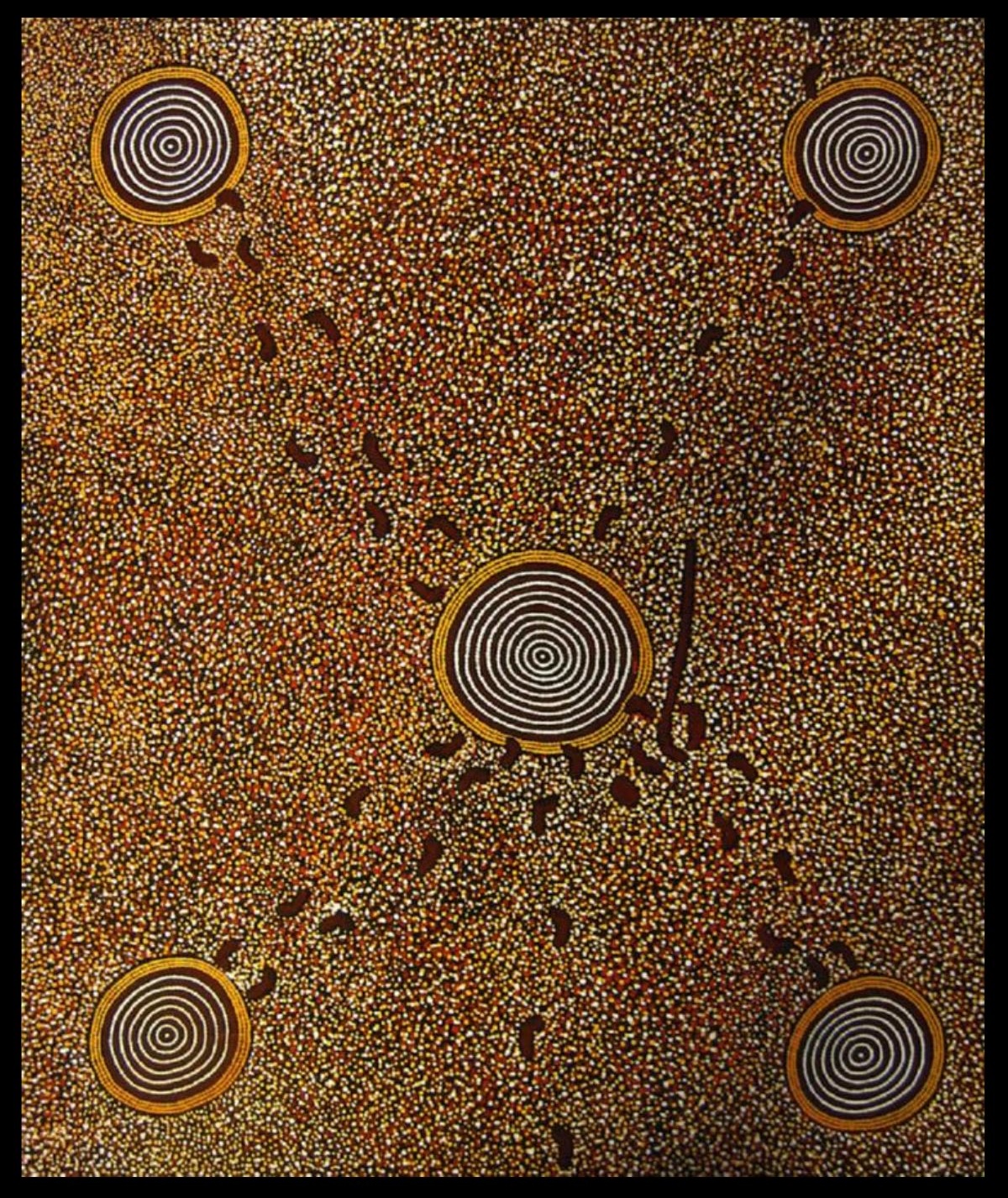
Old Womans Story 1988
Synthetic polymer paint on linen, bears artist’s name and Papunya Tula Artists catalogue number AT880617 on the reverse,
182 x 152 cm
Hammer Price: A$16000
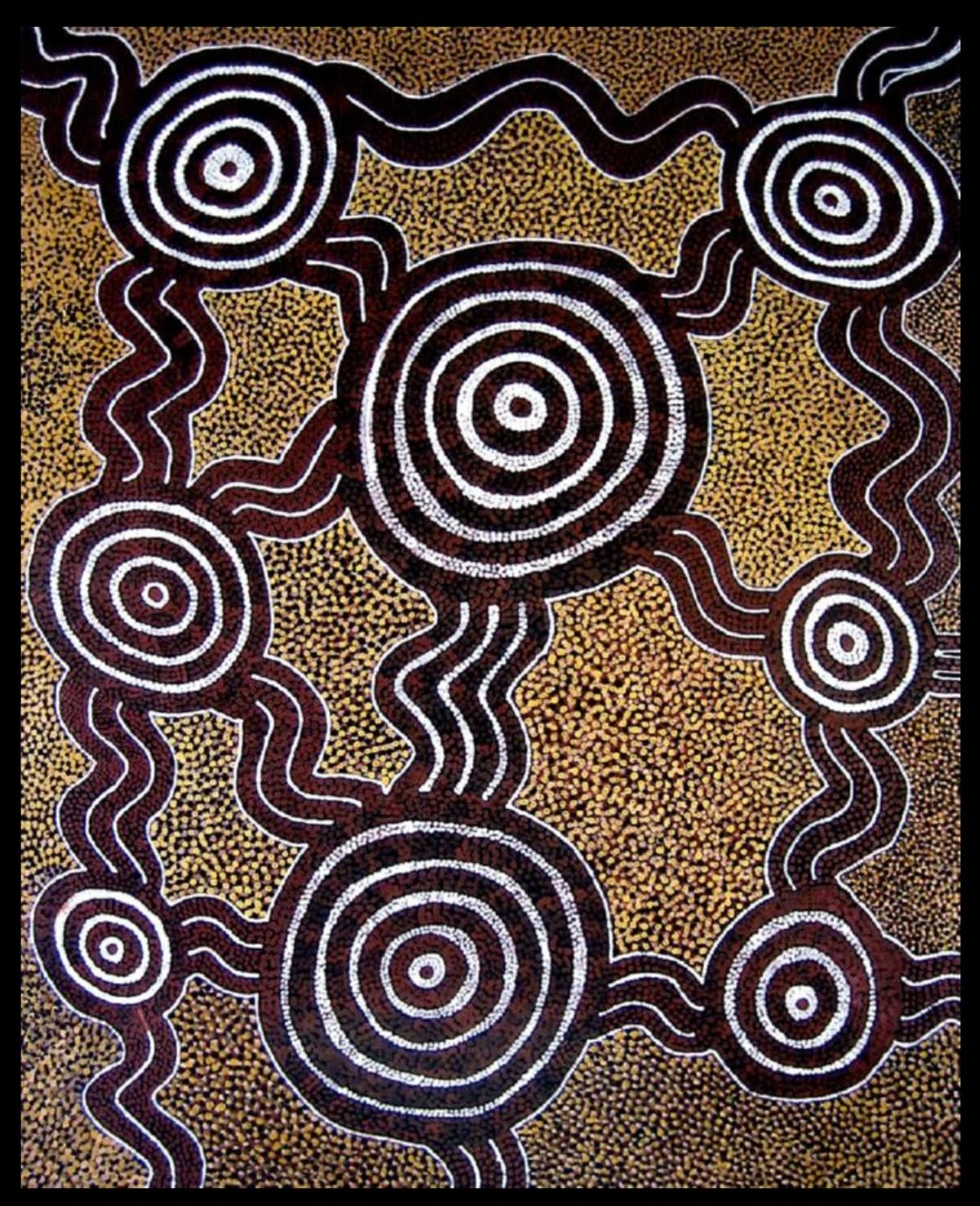
Kirritjinya 1989
Synthetic polymer paint on linen, bears signed Papunya Tula Artists catalogue number AT891262 on the reverse,
153 x 122 cm
Hammer Price: A$14,000
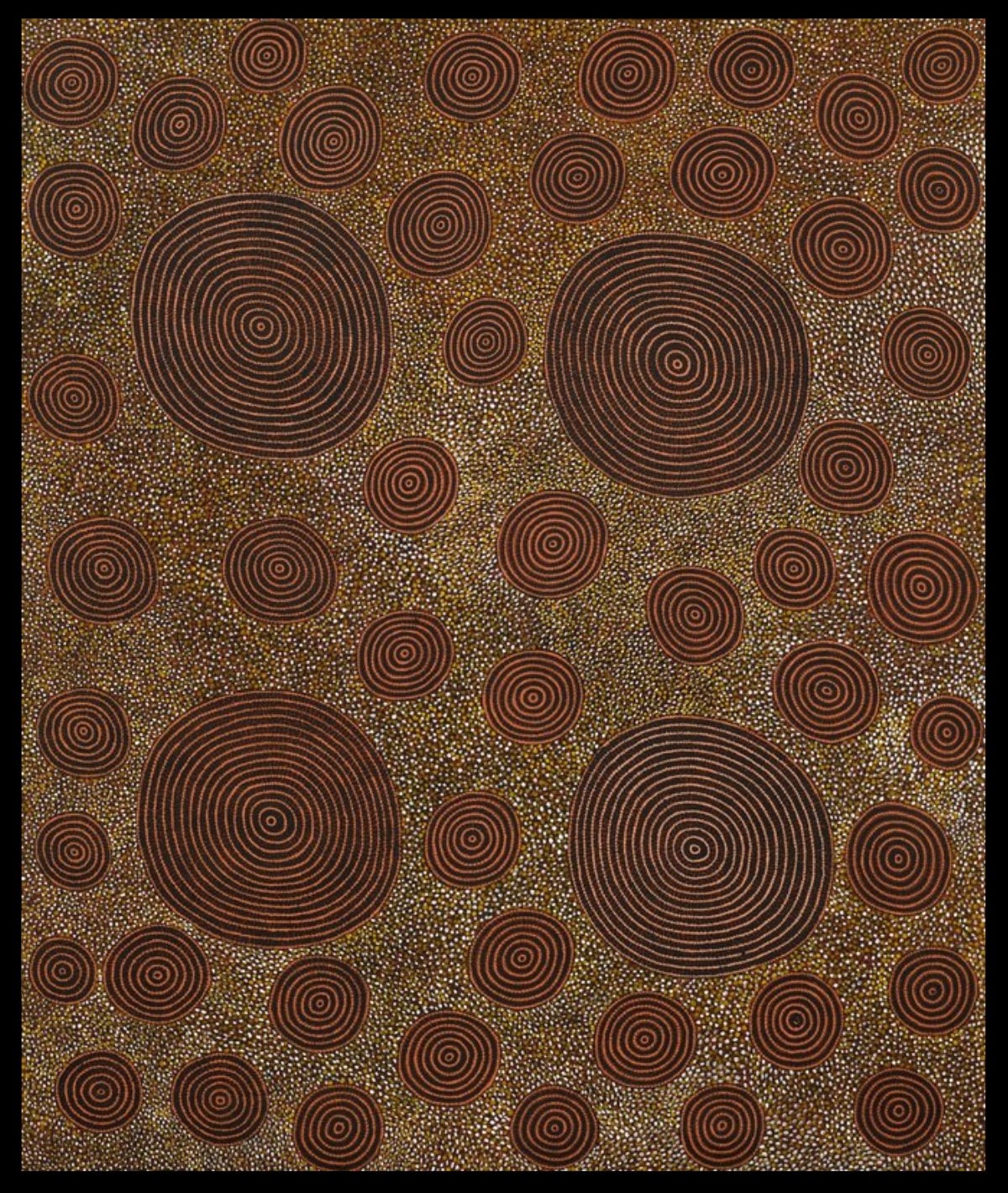
Ngaminya, Grandfather’s Country
Synthetic polymer paint on Belgian Linen, bears artists name and Papunya Tula Artists catalogue number AT890973 on the reverse,
183 x 152 cm
UNSOLD
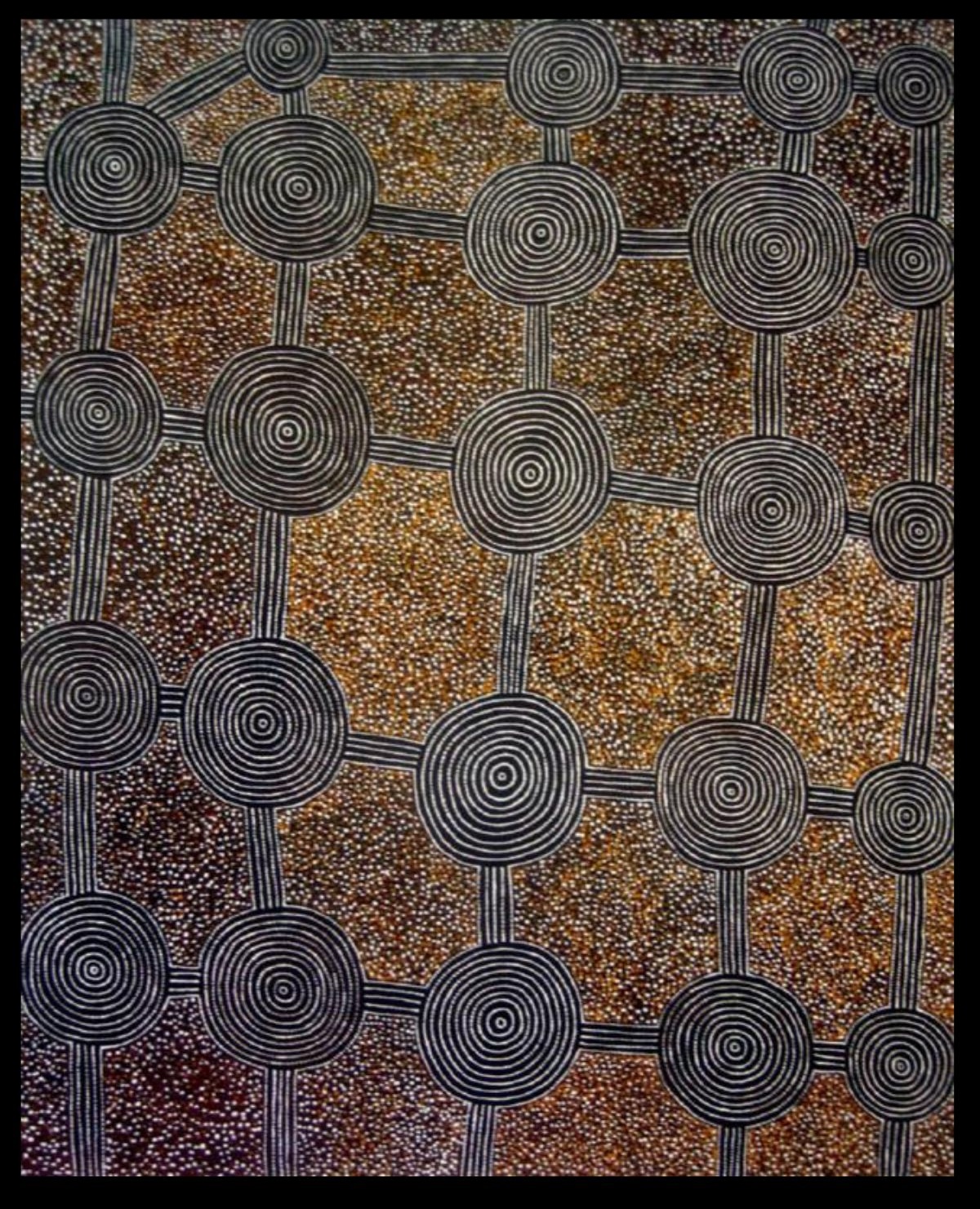
Yarranyana 1989
Synthetic polymer paint on linen, bears artist’s name, size and Papunya Tula Artists catalogue number AT890465 on the reverse,
152 x 122 cm
Hammer Price: A$98000
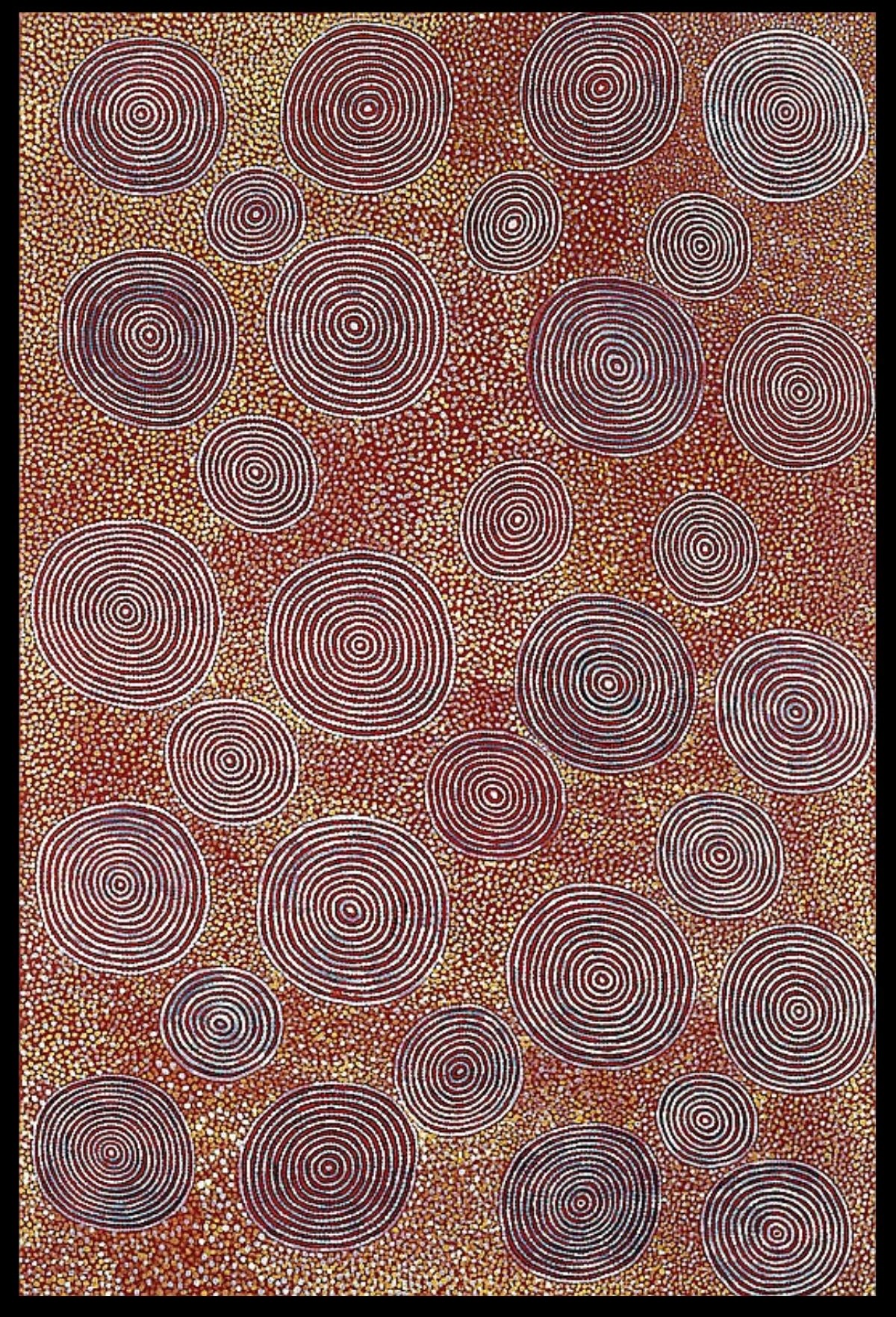
Tjukurla (North of Docker River) (1990)
Synthetic polymer paint on linen,
183 x 121 cm
Hammer Price: A$20,000
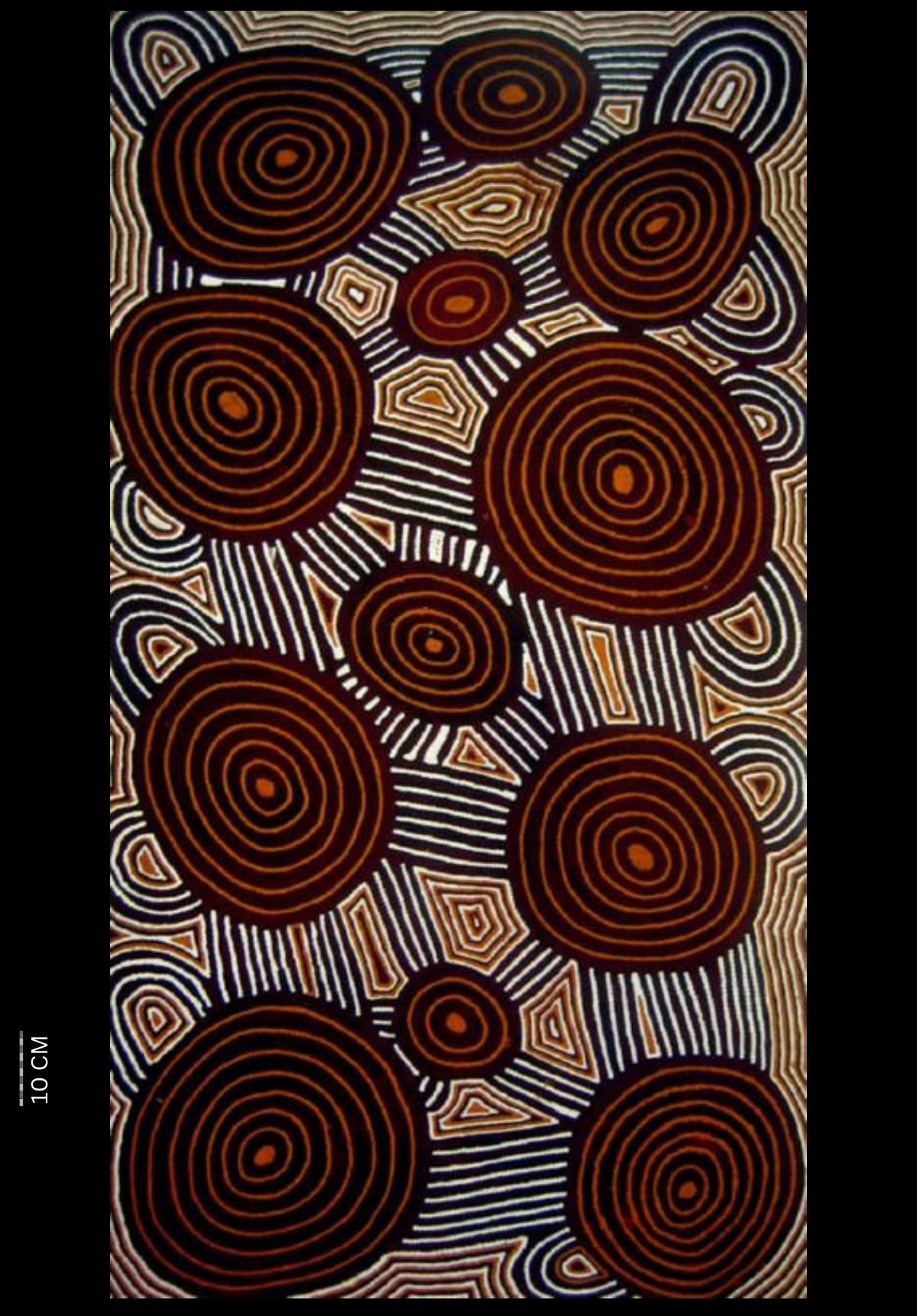
Untitled 1990
Synthetic polymer paint on linen, bears artist’s name, size and Papunya Tula Artists catalogue number AT901077 on the reverse,
168 x 89 cm
UNSOLD

The Tingari at Yawalyurru 1990
Synthetic polymer paint on linen, bears artist’s name, ‘Docker River’, and ‘Commissioned by Duncan Kentish’ on the reverse of the painting, and ‘East to West’ exhibition name, catalogue number (96), location (Tandanya 1990), title and date of work on the reverse of the stretcher,
182 x 121 cm
UNSOLD
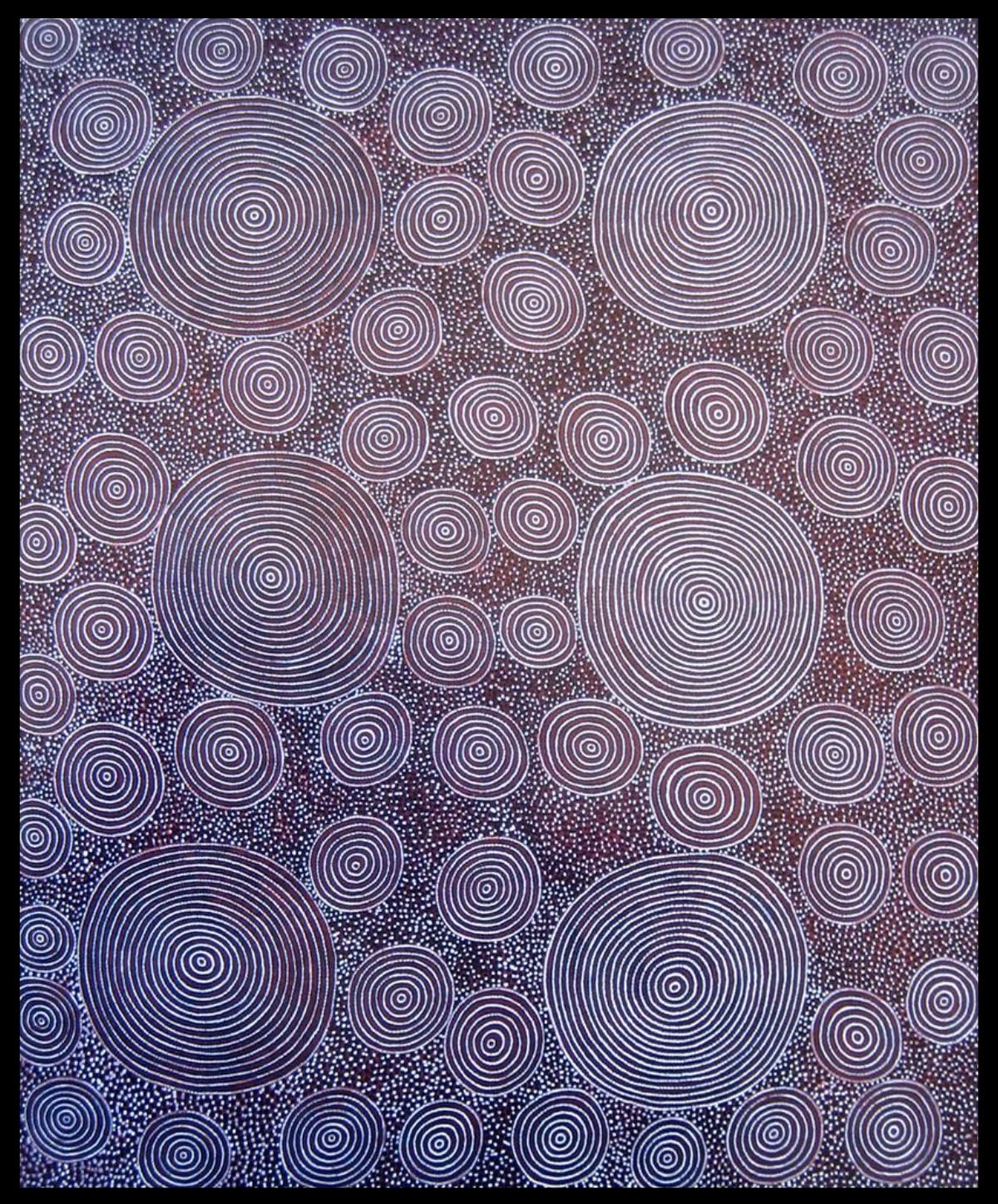
Tingari Men’s Travels from Kulkuta Toward Lake Macdonald 1990
Synthetic polymer paint on linen, bears Papunya Tula Artists catalogue number AT900918 on the reverse,
182.5 x 152 cm
Hammer Price: A$104,000
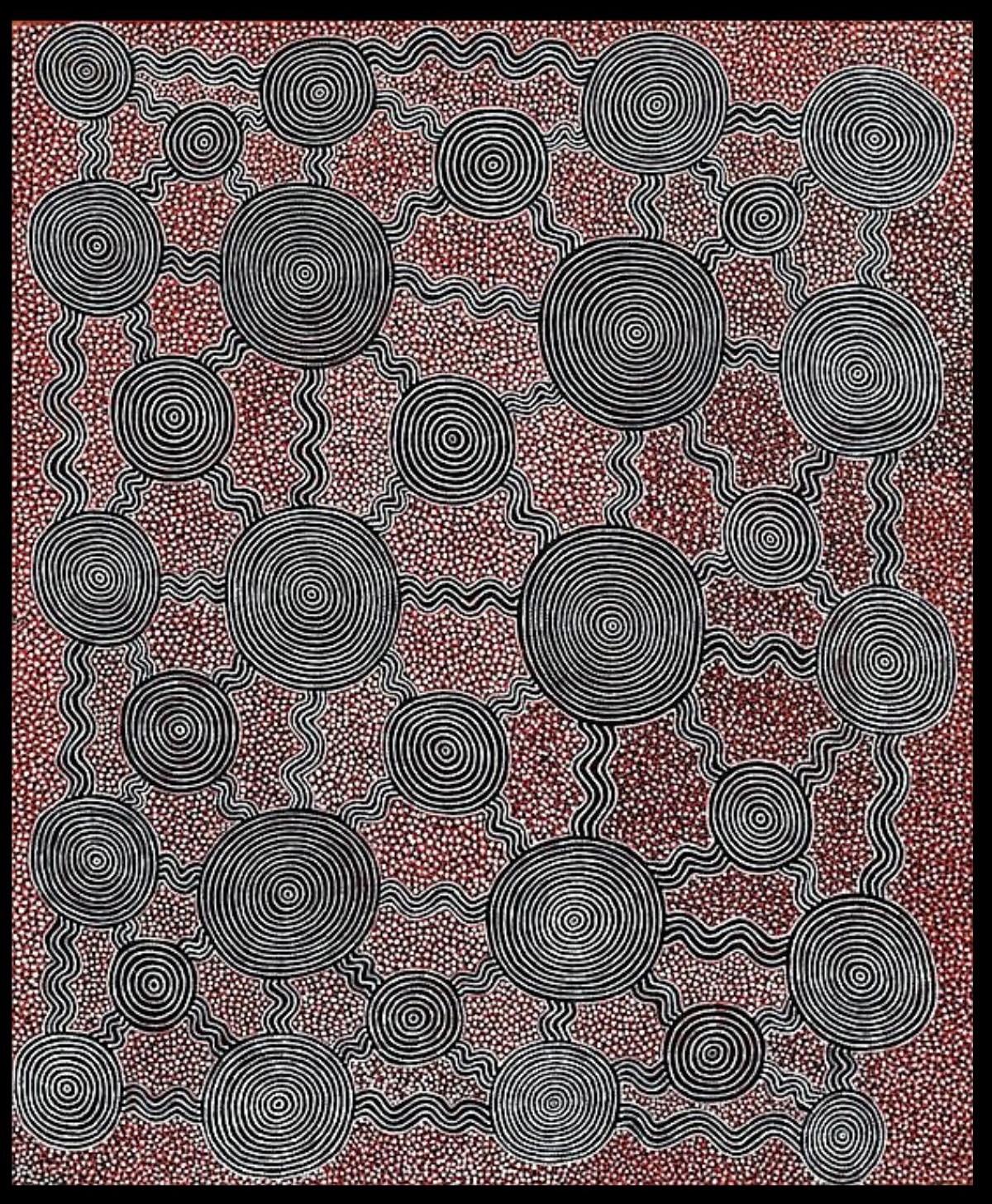
Tjimana (1991)
Synthetic polymer paint on linen,
183 x 153 cm
Hammer Price: A$30,000
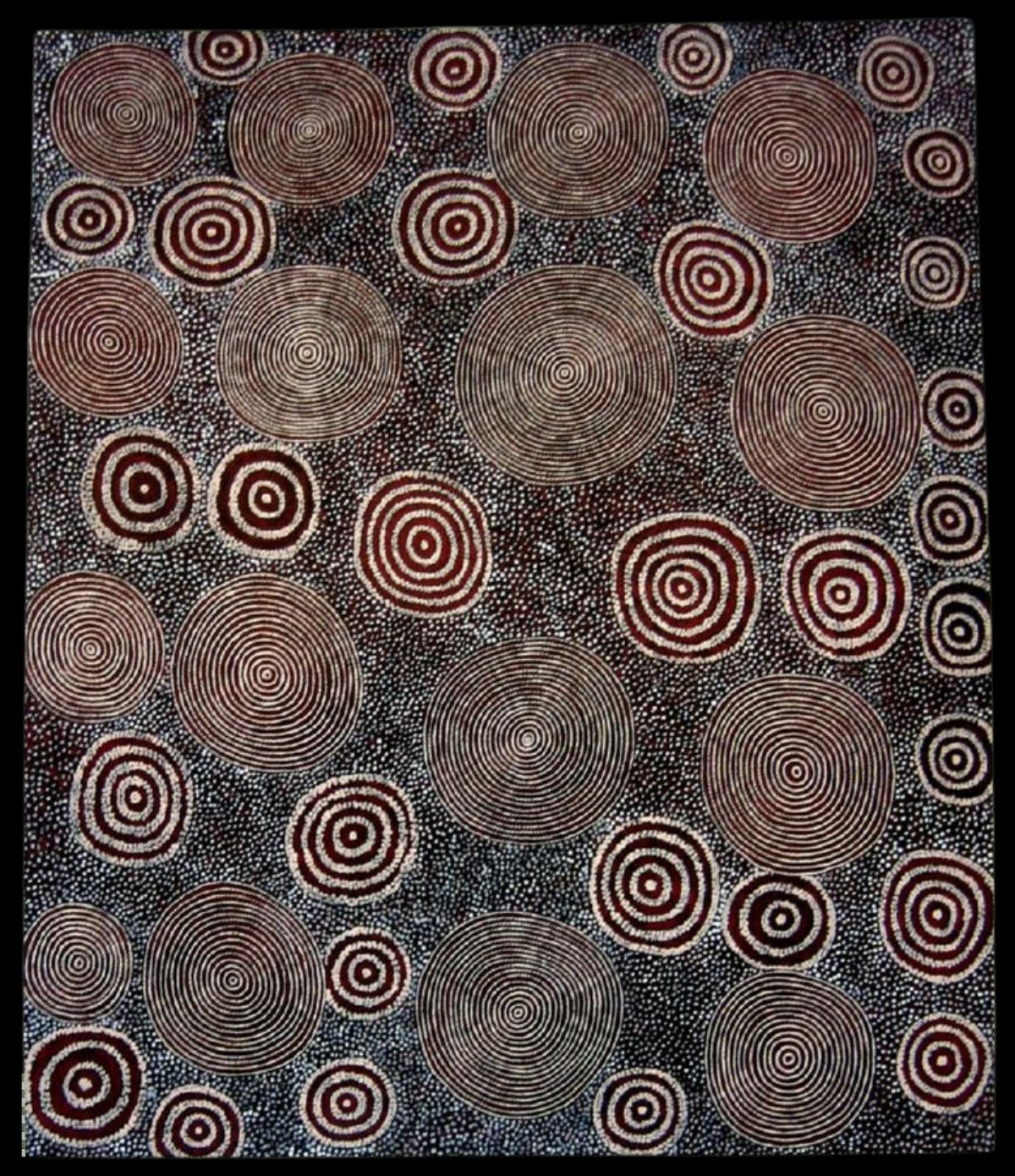
Black Seed Dreaming at the Site of Kullatata 1991
Synthetic polymer paint on linen, bears signed artist’s name, size and Papunya Tula catalogue number AT910606 on the reverse,
183 x 153 cm
Hammer Price: A$26,000
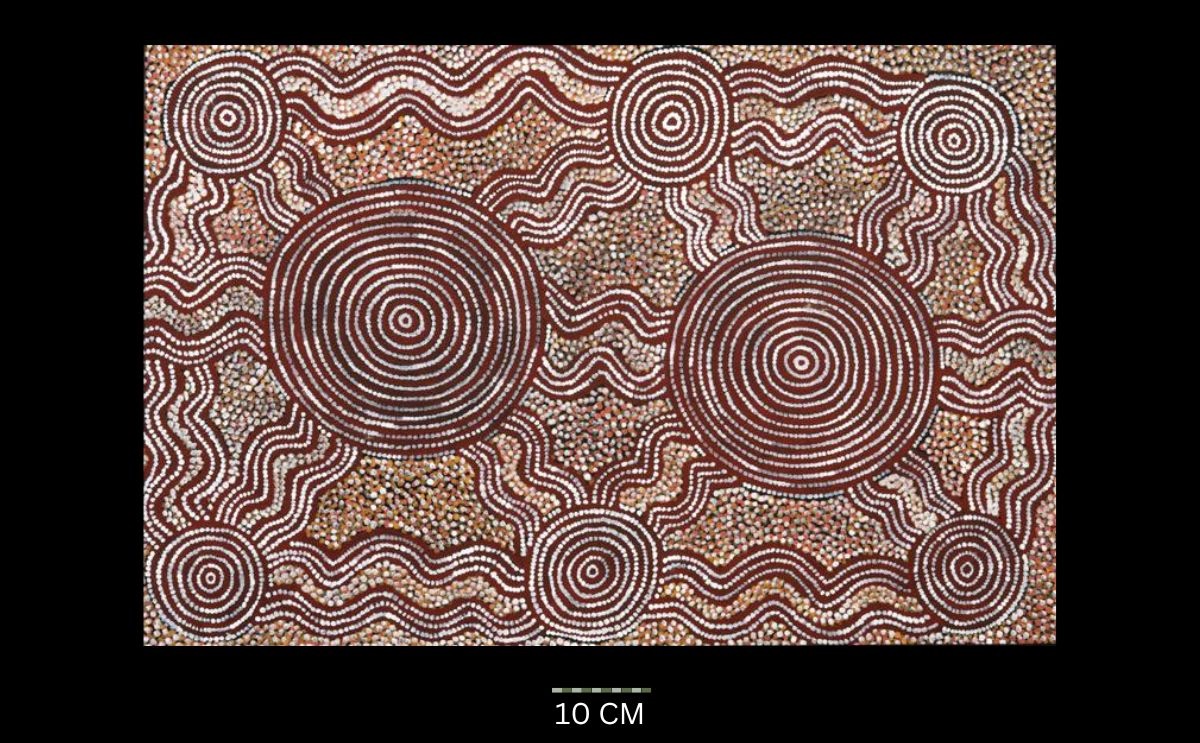
Snake Dreaming at Nyimirrinya, 1992
Synthetic polymer paint on board,
91 x 61 cm
Hammer Price: A$3800

Tingari Men Travelling to Kuruyurkta 1992
Synthetic polymer paint on canvas, bears artist’s name on the reverse,
137 x 91 cm
UNSOLD
Anatjari Tjakamarra references
Papunya: A place made after the Story
All images in this article are for educational purposes only.
This site may contain copyrighted material the use of which was not specified by the copyright owner.
